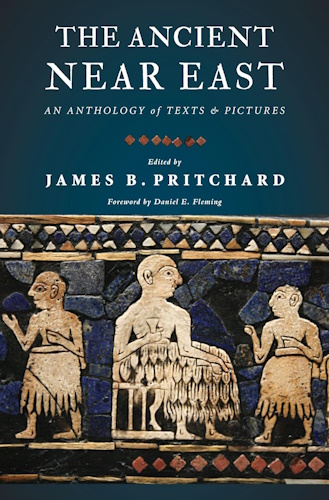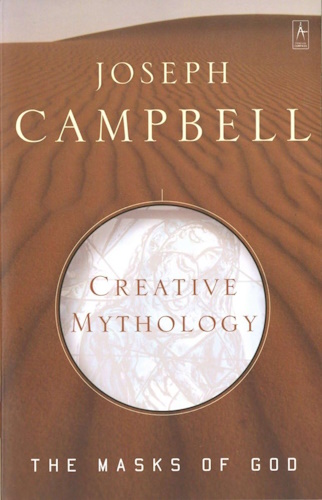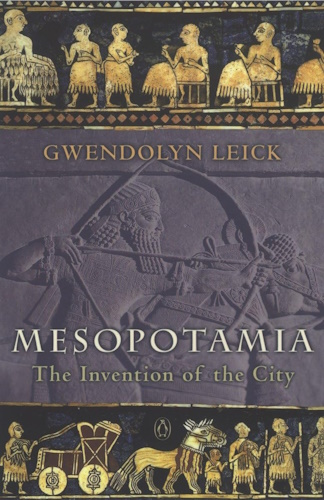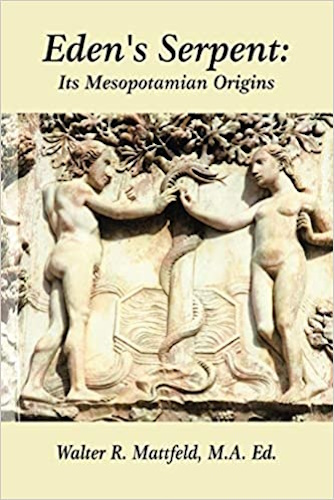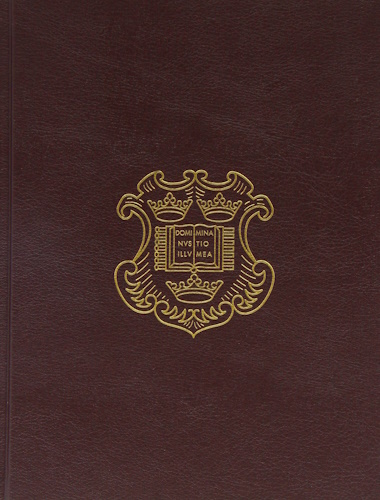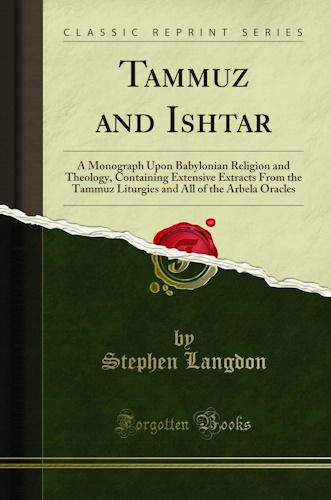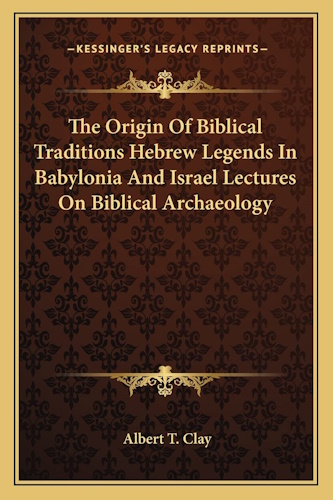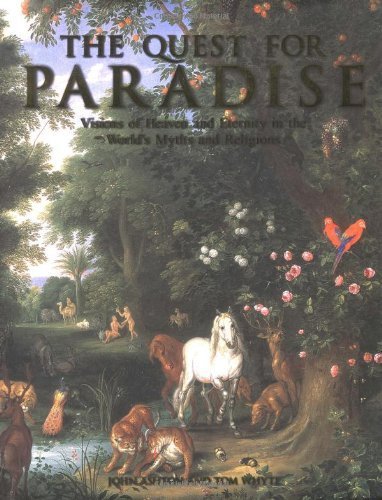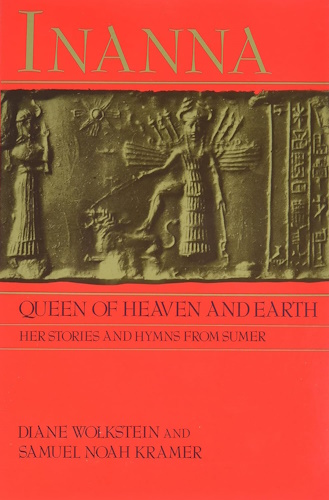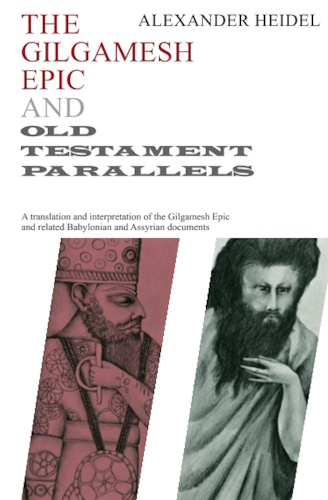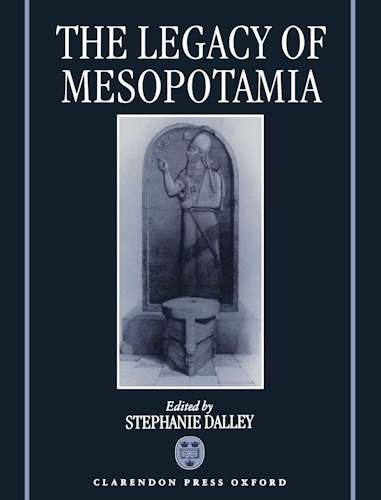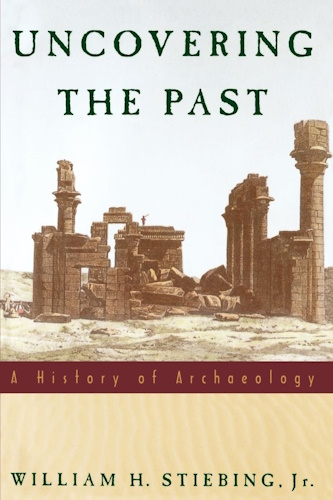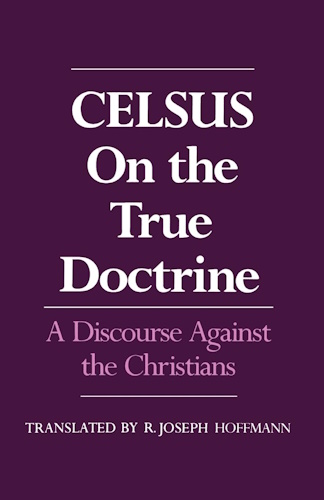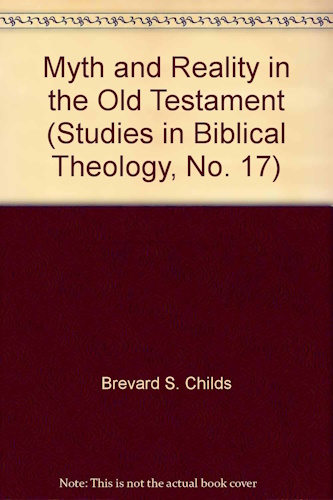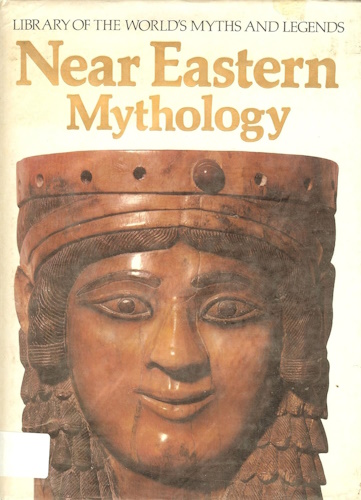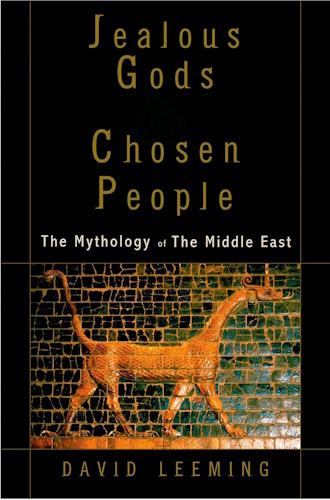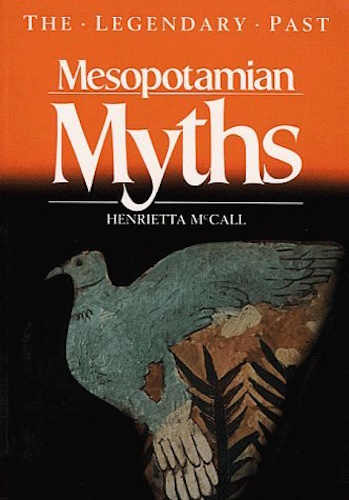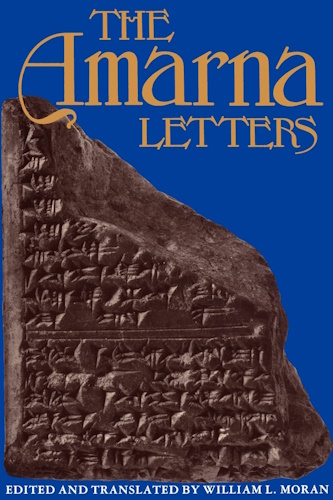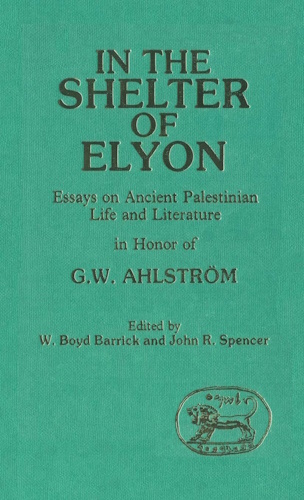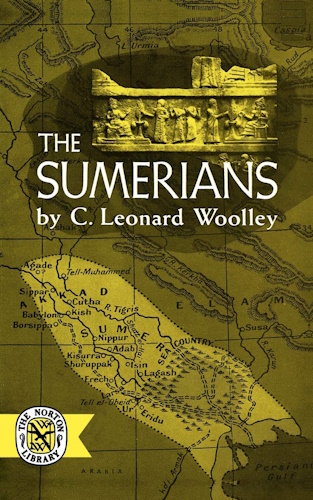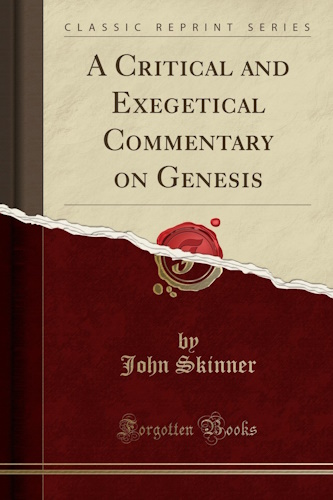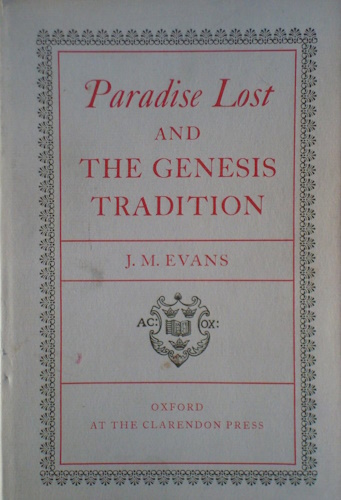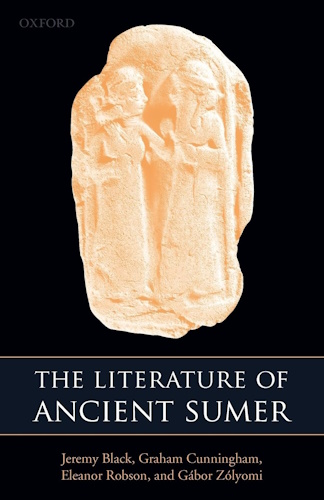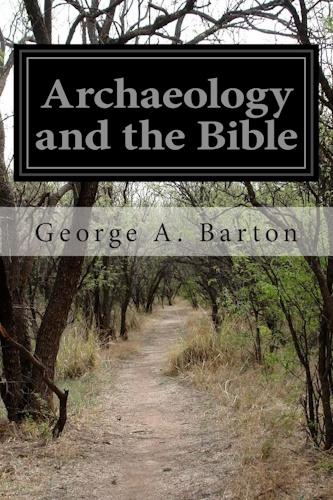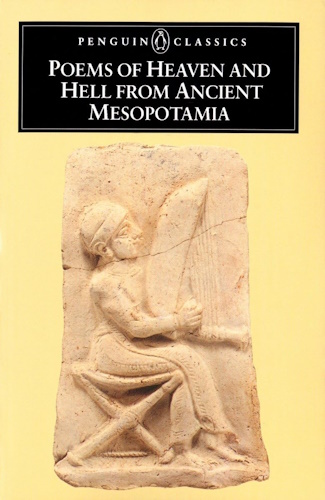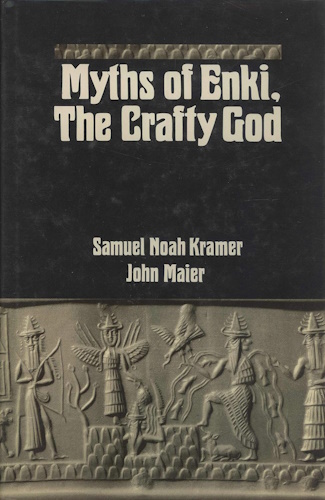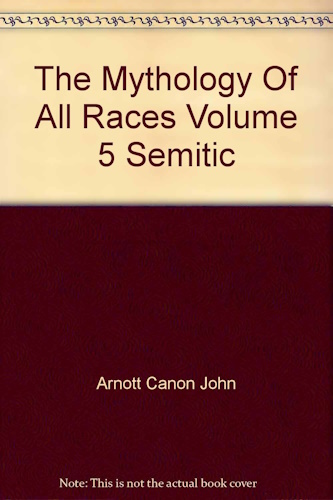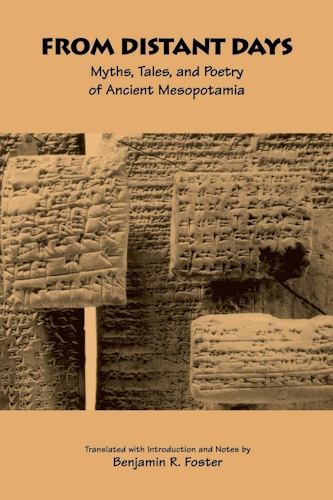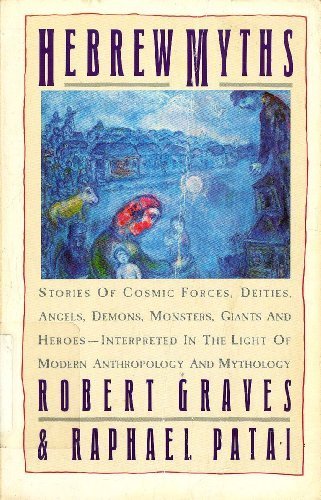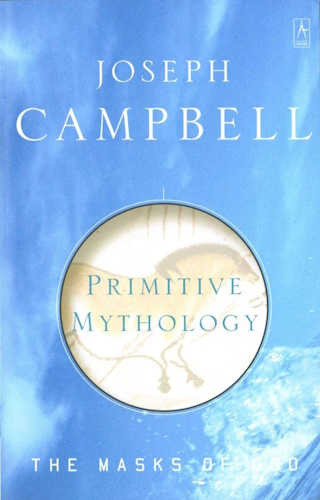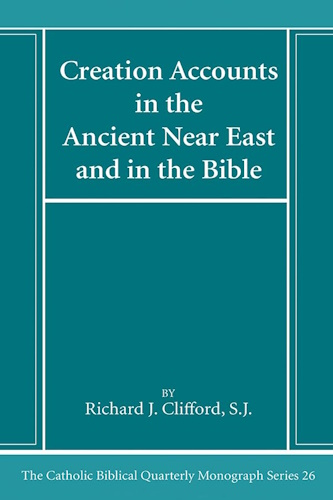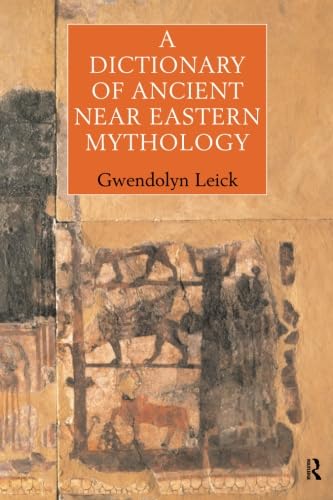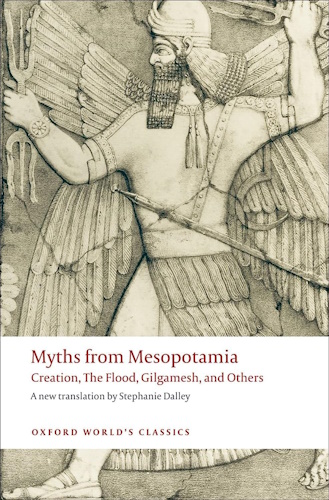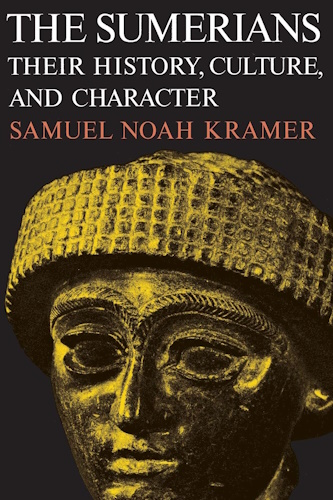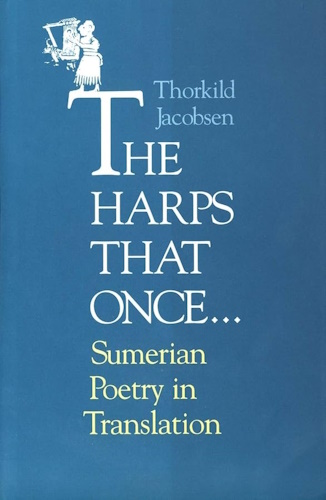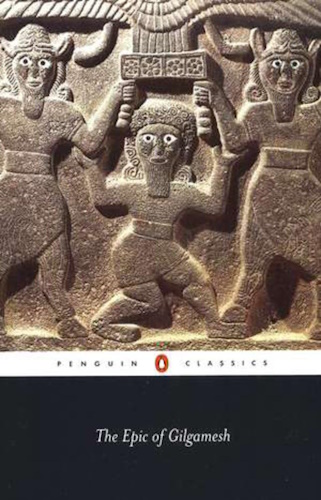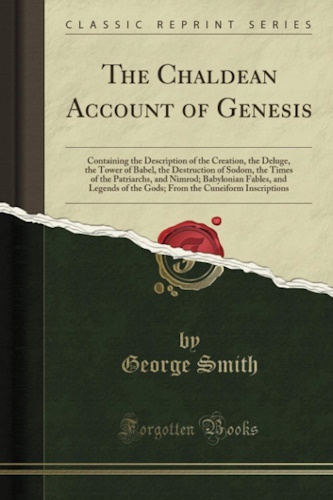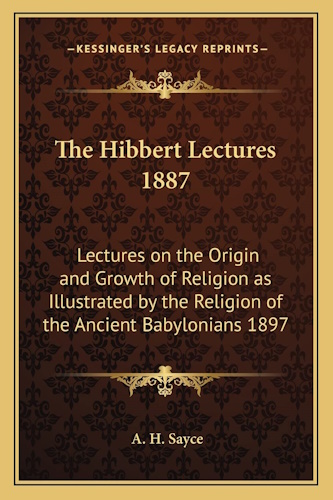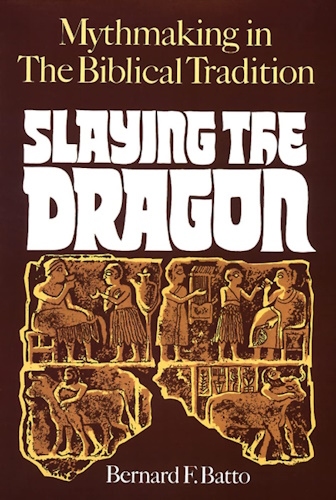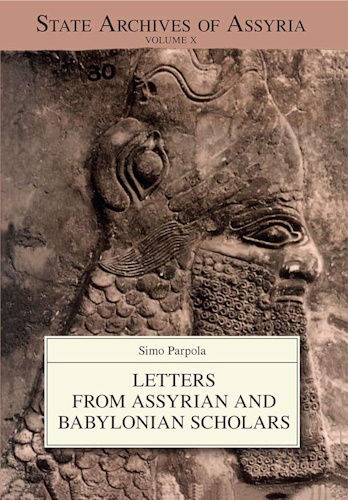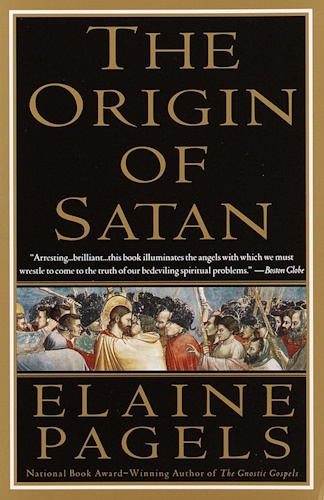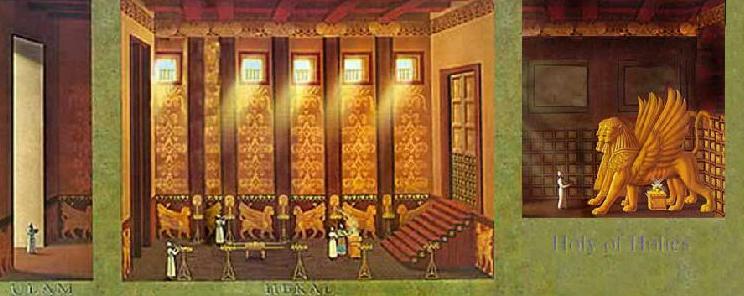![]()
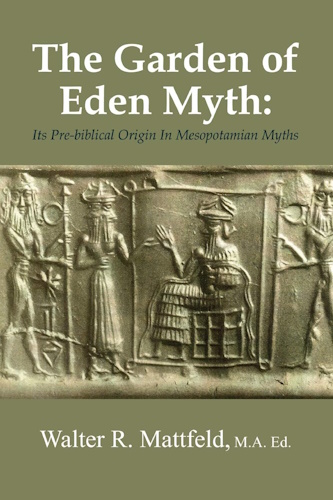
Bible Origins
The Pre-Biblical Origins
of the Cherubim
And The Mercy Seat
Atop the Ark of the Covenant
by
Walter Reinhold Warttig Mattfeld y d la Torre, M.A. Ed.
e-mail contact
10 Nov. 2001
Revisions through: 26 June 2009
![]()
26 June 2009, An _Important_ Update:
This article was first composed in 2001. I realize now that the pre-biblical origins of the Cherubim is a much more "involved" story than I had originally thought. They went through an evolution of forms from circa 2300 B.C. to the 21st century A.D.
In a nutshell: I understand that the Cherubim began life as Lower Mesopotamian deities possessing human forms ca. 2300 B.C. at Eridu in ancient Sumer. Some of them could also assume serpent forms (cf. below, The Adapa and the Southwind myth whose setting is Eridu). However, winged sphinx-like beasts exist in a wall mural guarding datepalm trees at Mari on the Euphrates circa 1779 B.C. also revealing that the Cherubim had animal forms (two different traditions apparently are being fused together, Lower Mesopotamian human forms at Eridu and animal forms from Amorite Mari). By circa 1200 B.C. after the Exodus from Egypt, they had evolved into Canaanite winged Sphinxes with human heads (the Mari sphinxes become Canaanite sphinxes). By Ezekiel's time in the 6th century B.C. they had become human forms with animal features (somewhat similar to Syrian, Assyrian and Chaldean forms). By Christian times, the 2d-5th centuries A.D., they had evolved into Greek Nikes and Roman Victorias, (females with long-flowing gowns and wings). By Renaissance times, the 16th century A.D., they evolved into two divergent forms, long-haired winged angels with long flowing robes and naked little chubby children with wings known today in the 21st century A.D. on Valentines' Day cards as Cherubs.
The Mesopotamian myths do not have any knowledge of man being expelled from their city-gardens for an act of rebellion like Genesis' Garden of Eden account. The gods made man to replace themselves as agricultural laborers, it would be foolish to expell man from their city-gardens for the gods would have to care for their gardens themselves.
Where then are the Hebrews getting the notion that a rebellion has occured in a god's garden and the gardener has been removed?
I suspect this is a recasting of the Igigi gods rebellion in the Atrahasis myth. They were "removed" from Enlil's garden at Nippur (and Enki's garden at Eridu), and man was created to replace them. So, yes, there was indeed in the Mesopotamian myths a story about a rebellion of "man" working in a god's garden and being removed from said garden! In fact when the hardwork of the Igigi gods is described it is said: "when the gods were _man_ they did grievous labor." So "man" in the form of the Igigi gods was removed from a god's garden for an act of rebellion. However, the Hebrews have inverted the storyline. "man" (a euphemism for the Igigi) welcomed this removal for now they enjoy an eternal rest from toil as already enjoyed by the Anunnaki gods (Anu, Enlil and Enki). The Hebrews portray the removal of "man" from a god's garden as punishment for man whereas it was an act of mercy and a blessing for the Igigi ending their grievous labor. Christianity hopes that one day God will allow man _back into_ his garden of Eden, whereas the Igigi would never want to return to the Anunnaki's city-gardens and the grievous toil there! Christianity teaches that when man returns to the Garden of Eden he will once more enjoy God's fellowship and companionship as did Adam and Eve. But the Igigi working in the gods' gardens did not enjoy fellowship with the Anunnaki gods! The Anunnaki ruthlessly exploited the Igigi and ignored night and day for 40 years their pleas for an end of their toil! With the "removal from the gods' gardens" the Igigi now enjoy fellowshipping with the Anunnaki, for both now are free of toil upon the earth, both can recline on their couches in indolent leisure as both ruthlessly exploit man the agricultural slave having him care for their gardens, and present them the produce to eat in the city temples. An inversion has occured! Man's (the Igigi being called "man") fellowship with a god (Enlil of Nippur and Enki at Eridu) is obtained via removal from the god's garden instead of by remaining as a laborer in a god's garden!
Some Secular Scholars have noted parallels between the reasons given in Genesis for Adam's lost chance for obtaining immortality and the Adapa and the Southwind Myth which sought to explain how a man called Adapa once-upon-a-time, had a chance to obtain immortality for himself and mankind, but lost-out on this unique opportunity. I understand that the Hebrews took motifs from this story and recast Adapa as Adam. The god who denied Adapa an opportunity to attain immortality, Ea, pronounced aya (Sumerian: Enki) of Eridu, has been transformed by the Hebrews into a Yahweh-Elohim in the Garden of Eden. Neither Adapa or Adam ate the food which would have conferred immortality on them. Ea gave Adapa forbidden knowledge but denied him immortality presaging Yahweh-Elohim allowing Adam to obtain forbidden knowledge but denying him immortality.
Adapa served his god Ea as a priest, baker, and fisherman in Eridu, in Sumer (Lower Mesopotamia, modern Iraq). While fishing one day the South Wind overturned his boat, tossing him in the water. In anger he uttered a curse, breaking the South Wind's wing. Anu who dwelt in heaven orders Adapa's appearance before him to learn how he was able to overpower a lesser god. The sly Ea (Anu's son), warned Adapa not to eat the "bread of death" or drink the "water of death" that Anu would present to him or he would die. When Anu presented him "bread of life" and "water of life," a confused Adapa refused to consume them. Because Adapa had obtained knowledge forbidden man by the gods from Ea (spells and incantations to break the southwind's wing stopping breezes) Anu offered him immortality, concluding if Adapa has a god's forbidden knowledge he might as well have immortality too. Because Adam obtained forbidden knowledge he was denied immortality. Because Adapa obeyed Ea and refused to eat, he lost out on a chance at immortality. Because Adam did not obey his God and ate he lost out on a chance at immortality. The Hebrews are taking the earlier themes and recasting them as a 180 degree about face or contrary argument in affect "refuting or denying" the Mesopotamian notions, to challenge the Mesopotamian account of why and how man lost out on a chance to obtain immortality. It is interesting to note here that some think of Paradise as being in heaven, not on the earth, as Christ told the thief on the cross "This day you will be with me in paradise" (Luke 23:43) and paradise is but another name for the Garden of Eden. Adapa was "removed" from a heavenly abode by Anu's two guards. We learn from the Sumerian myths and hymns found at Nippur praising Dumuzi as the "lord of edin" mulu-edin-na, that three edins existed: a high steppe called an-edin-na; a low steppe, ki-edin-na; and an underworld steppe, arali-edin-na. Radau advances the notion that _all forms_ of edin-na in relation to the Dumuzi hymns found at Nippur are refering exclusively to the underworld, a notion I do not share ( (cf. pp. 2, 29, & 17. Hugo Radau.Sumerian Hymns and Prayers to the god Dumu-zi or Babylonian Lenten Songs from the Temple Library of Nippur.
Philadelphia. University of Pennsylvania. 1913).
To the degree that Adapa like Adam possessed godly forbidden knowledge (upsetting Anu), was warned by his god (Ea) not to eat the forbidden food of death and lost out on immortality he "prefigures" Adam. Anu ordered his gate guards Gish-zida (Nin-gish-zida) and Dumu-zid to "remove" man (Adapa) from his heavenly abode and return him to his earth at Eridu, said "removal" denying man any furrher chance to eat of the "bread of life" and obtain immortality. So, the biblical cherubim who guard the tree of life are, in part, recasts of Gish-zida and Dumu-zid, two semi-divine beings who as guards of Anu's heavenly abode not only bar man's access to the supreme god Anu, they also bar man's access to the "bread of life" and "water of life" that bestows immortality on those who partake of it just as the cherubim bar man's access to the tree of life. Of interest here is that the Quran teaches that the Garden of Eden is in heaven and that Adam was removed from this heavenly garden to live upon the earth, uncanny echoes of Anu's guarded heavenly abode and Adapa's removal.
Thus the "pre-biblical cherubim" _originally_ were two Sumerian demi-gods possessing a human form (some myths portray them being originally human beings who later became "demi-gods" after their deaths in the underworld called euphemistically edin, who achieve later a resurrection to be Anu's heavenly guards).
Below are pictures from cylinder seals showing Nin-gish-zida (Gish-zida in the Adapa myth; nin= "lady" gish="tree," zida="true," "rightful," "steadfast") with serpent-dragon heads erupting from his shoulders, presenting king Gudaea of Lagash (reigned ca. 2100 B.C.) to Enki (Akkadian: Ea) who bestows upon him a pot with two streams of freshwater for the gods' garden in Lagash. A goddess stands behind Gudaea with hands upraised. Behind her is a walking horned and winged serpent-dragon, the animal that Nin-gish-zida could at will change himself into (whence the reason serpent-dragon heads erupt from his human shoulders). That is to say Nin-gish-zida, who on Anu's behalf presented Adapa the bread and water of life CONTRA Ea's (Enki's) warning NOT TO CONSUME the "bread and water of death" OR ADAPA WILL DIE, could assume the form of a heavenly serpent dragon, rather like Satan is portrayed as having the ability to assume human form and is also spoken of as "that old serpent" in the Garden of Eden (Revelation 12:9).
A caveat or warning: There is no mention of a serpent or serpent-dragon in the Adapa and the South Wind Myth account. The serpent "associations" made here in this article are based on my personal research into "other" myths and hymns regarding these protagonists (cf. below for the sources of these epithets or "serpent associations").
Dumu-zid bore the Sumerian epithet ama-ushum-gal-anna, "[the] mother is a great heavenly serpent-dragon." In one myth he escapes his captors the Ugalla demons who seek to carry him to the underworld accomplishing his death by asking his brother-in-law Utu the sun-god to take away his hands and feet and make him into a serpent. Utu agrees and Dumu-zid (dumu="son," zid="true") slithers out of his bonds as a serpent, temporarily escaping his captors. So, Adapa had been urged by three deities, Anu, Ningishzida, and Dumuzi, in heaven, to consume the "bread and water of life." He didn't eat or drink because he remained faithful to Ea's warning it was the food of death. So Ea (e.="house," a="water") thwarted the man's chance at immortality by lying to him.
In other myths the Akkadian Ea as the Sumerian Enki bore the Sumerian epithet ushum-gal meaning "great serpent-dragon" (Technically, ushum means "serpent,: gal means "great," thus: "great serpent," however specialists tend to render the word as "dragon" or "great dragon" rather than "serpent," Thus "great serpent-dragon" is my preferred rendering) and he is praised for planting a wonderous gigantic fruit-tree in his garden at Eridu. That is to say, Ea as Enki the walking, talking serpent-dragon "tricked" man out of a chance for immortality by telling him not to eat the "bread of death" or drink the "water of death" or he would surely die. I understand the Hebrews have recast these myths into a serpent associated with a fruit tree in a Garden in Eden, coaxing man (Eve actually and thereby Adam) to eat contra Yahweh's command, telling him "You will not die, your eyes shall be opened and you shall be like a god." Had Adapa eaten the "bread of life" and drunk the "water of life" proffered him by the serpent gods Ningishzida and Dumuzi on Anu's behalf, he would have secured immortality for himself and mankind. He didn't and the Adapa and the Southwind Myth concluded that Adapa was to blame for mankinds' suffering disease, illness and death ever since, just as Adam is blamed as consigning the rest of mankind to disease and death in the New Testament (1 Cor 15:22). Anu ordered Adapa's "removal" from his heavenly abode, which was carried out by his attendants, Ningishzida and Dumuzi. Thus Anu has become Yahweh who ordered Adam's removal for an act of rebellion. Yahweh removes Adam for eating and Anu removes Adapa for not eating. I understand that Ningishzida and Dumuzi have become the Cherubim.
Below: A picture from a cylinder seal of Ningishzida (the heavenly horned and winged walking, talking serpent dragon who offered Adapa immortality) presenting Gudaea king of Lagash (ca. 2100 B.C.) in Sumer to Enki the ushumgal "the great serpent dragon" of Eridu. I understand that Ningishzida is one of several pre-biblical prototypes behind Genesis' Cherubim who drove Adam from Eden, in that he "escorted" Adapa from Anu's heavenly abode after he failed to consume the bread and water of life. Ningishzida is shown on the below seal twice, in animal form as a walking, horned and winged serpent-dragon and again in human form with beard, horned helmet and serpent-dragon heads erupting from his shoulders identical to the four-legged beast on the seal. That is to say, like Christianity's Satan who was called a heavenly serpent-dragon, Ningishzida had the power to assume animal as well as human forms (cf. p. 57 for this illustration in Sir Charles Leonard Woolley. Vor 5000 Jahren. Ausgrabungen von UR. Stuttgart, Deutschland. Franckh'sche Verlagshandlung. 1928. [A German edition of the 1928 English text titled The Sumerians]).
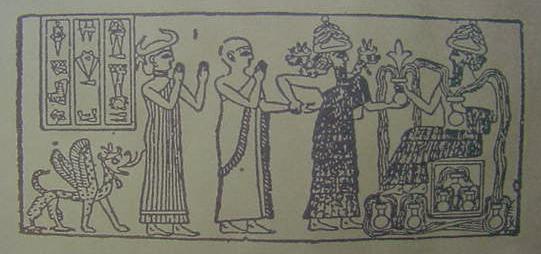
Below, a picture of Dumuzi (biblical Tammuz whom apostate Jews honored in the Jerusalem temple by holding a branch to their nose in a ritual act cf. Ezekiel 8:14-18. Note: one of the branches is near Dumuzi's nose in the below seal), the "serpent-dragon of heaven", who offered Adapa on Anu's behalf, immortality and who escorted Adapa from Anu's heavenly abode, after he failed to eat the proffered food. He is, then, like Ningishzida, a Cherubim prototype. There are four scenes on the cylinder seal: (Scene 1) Dumuzi's hands and feet have been bound with ropes to sticks by Ugalla demons from Hell, he wears his crown and scepter (He is a king of Uruk). He has the Sumerian epithet mulu-edin-na "the lord of edin" and it was at his sheepfold in edin that the demons overpowered him and carried him off to the underworld; (Scene 2) A half-naked Dumuzi descends into the underworld through its gate (clothing articles being surrendered at each of Hell's 7 gates until one arrives naked before Hell's rulers) without crown and sceptre accompanied by the snakelike Ugalla demons; (Scene 3) A naked Dumuzi is in the underworld surrounded by the Ugalla; (Scene 4) Dumuzi has achieved a six-month's resurrection from the underworld and returns to edin (the steppe land that the Tigris and Euphrates rivers course through) he holds two branches bearing fruit, symbolizing he is the life force in the plants at Spring, he stands upon a walking serpent-dragon, perhaps an allusion to his Sumerian epithet ama-ushumgal-anna "the mother is a great serpent-dragon". According to one myth Dumuzi begs his brother-in-law Utu the sun-god to help him escape his bonds, Utu agrees and turns Dumuzi's hands and feet into "Serpent hands and feet." Serpents have no hands or feet, so this is probably a Sumerian metaphor for saying that by being made into a serpent, Dumuzi is able to slither out of his bonds made by the Ugalla, briefly eluding them. In other words, Dumuzi is not only a Cherubim prototye he is also a prototype of Eden's serpent that "lost its legs"! However, in the Sumerian account the "loss of legs" was not a curse it was a blessing allowing Dumuzi to excape his captors who sought his life in the edin.The below picture of Dumuzi is from a cylinder seal impression in clay (cf. p.71. Henrietta McCall. Mesopotamia Myths. The Legendary Past Series. Austin, Texas. University of Texas, published in co-operation with the British Museum Publications of London, England. 1990)
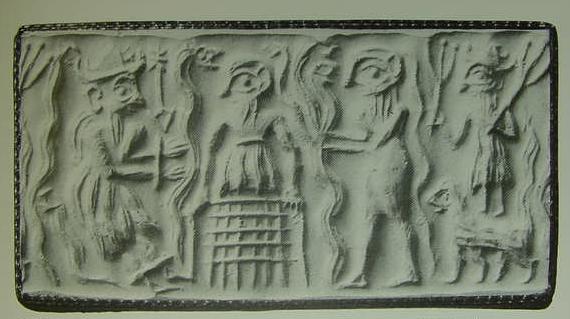
So, then, dear reader, what you have before your eyes are what _I understand_ to be the "original" pre-biblical prototypes behind the Cherubim in the Garden of Eden: the two gate guards who denied man (Adapa) access to the "bread of life" that can bestow immortality on man after a god (Anu) ordered his removal from his abode and any further access to food bestowing immortality.
Gishzida (Nin-gish-zida) and Dumu-zid urged Adapa to eat forbidden food contra Ea's warning. They have been recast into not only the biblical cherubim as guardian deities, they have also been fused together and recast as the Serpent in Eden who urged Adam, contra Yahweh's (Ea's) order, to not eat the forbidden food.
Christianity understands that is was the Serpent who caused man to lose out on the chance to acquire immortality. In the Mesopotamian account it was Ea/Enki the ushumgal, the "great serpent-dragon" of Eridu who prevented Adapa from eating the food which would have given him and mankind immortality by lying to him telling him he would die if he ate anything.
The Sumerian god Enki was famed as the god of wisdom and knowledge, he was also famed as being a crafty trickster god who's double-meaning words are likened to "serpent-venom" which ensares the unwise and naive. We are informed in the New Testament that serpents are associated with wisdom: "be wise as serpents and harmless as doves" (Matthew 10:16). Ea as Enki, the ushumgal of Eridu, is famed for his wisdom, craftiness, and his denying man immortality. He had given Adapa forbidden knowledge but denied him immortality according to the storyline. The forbidden knowledge was powerful curses to enable man to overpower the lesser gods like the Southwind. An upset Anu upon quizzing Adapa and learning what Ea has done decides, if this man has a god's forbidden knowledge I might as well make him like a god by allowing him to attain immortality by consuming the bread and water of lfe. Ea then, has been transformed into Yahweh who warned Adam not to eat, and he is also the Serpent (Enki the ushumgal or great serpent-dragon" that walks upon four legs) who urged man NOT to eat. That is to say Genesis' Yahweh and the Serpent are alter egos of Enki/Ea the ushumgal of Eridu, who erected a gigantic fruit-tree in his garden called a Mes-tree called the "flesh of the gods" because from its wood statutes of the gods were carved.
Three gods Ea (Enki), Ningishzida and Dumuzi, in other myths have serpent-dragon associations and _all_ bore the Sumerian epithet ushumgal "great serpent," "serpent-dragon," or dragon." Ningishzida has the power to assume human and serpent-dragon forms, Dumuzi was cast into a snake by the sun-god Utu and was called ama-ushumgal-anna "the mother is a great serpent-dragon of heaven," and Ea (meaning "house of water") in his earlier role of Enki (meaning "lord earth") was called ushumgal "great serpent-dragon" who planted a Mes-tree in his garden at Eridu. In the Book of Revelation the Edenic serpent is equated with Satan, who is also called the Devil, and who is understood by some to be able to take on a human form as well as that of a serpent (in the Garden of Eden) and he is described as a "dragon in heaven" who seeks the destruction of Christ's followers (cf. Rev. 12:1-7; 20:1-2). Christ is portrayed in other New Testament books as an Adam who bestows life in an allusion to the first Adam in whom all die (cf. 1 Cor 15:22, 45).
For Enki's epithet ushumgal cf. p. 39. "Enki and Inanna: The Organization of the Earth and its Cultural Processes." Samuel Noah Kramer & John Maier. Myths of Enki, the Crafty God. New York. Oxford University Press. 1989.
For Dumuzi's epithet ama-ushumgal-anna cf. p. 78. Vol. 5. Stephen Herbert Langdon. The Mythology of All Races, Semitic. Boston. Marshall Jones Company. 1931.
For Ningishzida's association with serpents cf. p. 90. Vol. 5. Stephen Herbert Langdon. The Mythology of All Races. Semitic. Boston. Marshall Jones Company. 1931. Ningishzida also bore the Sumerian epithet ushumgal meaning "great serpent" or "dragon" or "serpent-dragon." Langdon also argued Dumuzi (Tammuz) was an aspect of Ningishzida he being called "Damu the child Ningishzida" cf. p. 349. Vol. 5. Stephen Herbert Langdon. The Mythology of All Races, Semitic. Boston. Marshall Jones Company. 1931.
To reiterate: I understand that the Hebrews are recasting the Mesopotamian myth of how once-upon-a-time man had a chance to obtain immortality and lost-out because he was deceived by lies from a deity, Ea (Enki), who planted a wonderous tree in his Eridu garden and who bore the Sumerian epithet ushumgal "great serpent-dragon." The Hebrews are _denying, refuting and challenging_ the Mesopotamian beliefs by recasting these motifs into a new story. They have given several "new twists" to an old story: the "bread of life" and the "bread of death" have been recast as a fruit from the tree of life and a fruit from a tree of knowledge of good and evil.
Please click here for my article on Eden's serpent and its pre-biblical prototypes.
Please click here for my article on Dumuzi (biblical Tammuz).
Please click here and here for my article onthe Adapa and the South Wind Myth and the Garden of Eden.
However, Ningishzida and Dumzui are not the "only" deities who have been recast into the Cherubim, for they are not portrayed as "guarding trees" in a god's garden. There is yet one other Cherubim prototype, Humbaba (Huwawa) of The Epic of Gilagmesh, who guards a Lebanese Cedar Mountain "the seat of the gods," protecting its aromatic cedar trees from man's access on the god Enlil's behalf. Enkidu leads Gilgamesh (both are under the protection of the sun-god, Sumerian Utu, Akkadian Shamash) to this location. They slay Humbaba with a sword, beheading him (some accounts have Gilgamesh, others Enkidu, slaying Huwawa with a dagger or dirk). The epic exists in several rescensions with different details. In one account Gilgamesh "cons" Huwawau (at Enki's instigation) with a promise to be his brother, offering his sisters as wives as well as food and clothing in exchange for Huwawa's seven auras of terror (power) which are represented as cedar trees that are given in exchange for Gilgamesh's lying promises, who has his men from Uruk lop off their branches and chop them down, making a raft of them to float down the Euphrates to that city. After the seventh aura has been surrendered Gilgamesh "like a serpent," smites Huwawa and overpowers him (p. 158. Andrew George. The Epic of Gilgamesh. London. Penguin Books. 1999).
I understand man's (Adam's) forbidden access to trees in the Garden of Eden is a recast of the cedars guarded by Humbaba on Enlil's behalf. Note: In other myths it is Enlil who has Enki make man for him to replace the Igigi gods who complain of the hard toil they endured digging and maintaining irrigation ditches for his garden at Nippur. Enlil in yet another myth instigates a flood to destroy man. The sword (dagger or dirk) that killed Huwawa has been recast into a fiery sword protecting the garden from entry by man. The trees' guardian who was _killed_ by man, has been recast into a being (Cherub) who cannot be killed. Huwawa's Cedar Mountain has been recast as Yahweh's Cedar Mountain in Lebanon by Ezekiel (cf. Ez 28:13-16; 31:9-18). In Near Eastern cuisine cedar nuts are consumed as a sauteed garnish for various dishes, perhaps these were transformed in to fruit eaten by Eve?
Graves and Patai on Adam's "Fall" being a possible reworking of Enkidu and Adapa:
"Some elements of the Fall of Man myth in Genesis are of great antiquity...The Gilgamesh Epic...describes...Enkidu...shunned by the wild creatures...the priestess ...covered his nakedness...Another source of the Genesis Fall of Man is the Akkadian myth of Adapa...This myth supplies the theme of the Serpent's warning to Eve..." (pp. 78-79. "The Fall of Man." Robert Graves & Raphael Patai. Hebrew Myths: The Book of Genesis. New York. Greewich House. 1983 reprint of 1963, 1964 edition)
I find myself in agreement with Graves and Patai. Adapa and Enkidu have been fused together by the Hebrews and recast as Adam. Shamhat the Harlot who was held responsible for Enkidu's demise has been recast as Eve. Please click here for a picture of Enkidu, Shamhat and the Hunter in The Epic of Gilgamesh who were recast as Adam, Eve and Yahweh.
Below, a picture of a naked Huwawa (who's word is "fire," breath "death," who's roar "sunders" mountains) being slain by Enkidu (without cap) and Gilgamesh after the surrender of his seventh aura of terror in the form of a cedar tree whose branches are being lopped off before felling by one of Gilgamesh's men from Uruk (cf. p. 121. Andrew George. The Epic of Gilgamesh. London. Penguin Books. 1999). The Hebrews, applying a "new twist," deny that a lesser deity guarding a god's trees can be overcome and slain by sword-weilding men. So, via an inversion, the swords that slew Huwawa have been recast as a single fiery sword that accompanies the cherubim, denying man access to the tree of life. Huwawa guarded a cedar forest in the Lebanon and Ezekiel locates Yahweh's garden in the Lebanon, it possessing cedar trees (cf. Ez 28:14--19; 31:1-18), perhaps transformed and recast echoes of the Huwawa myth in the Epic of Gilgamesh? That is to say the swords that allowed man to slay a god's guardian deity have been recast as a sword that denies man access to sacred trees and prevents the saying of the guardian deity or dieties (another Hebrew inversion).
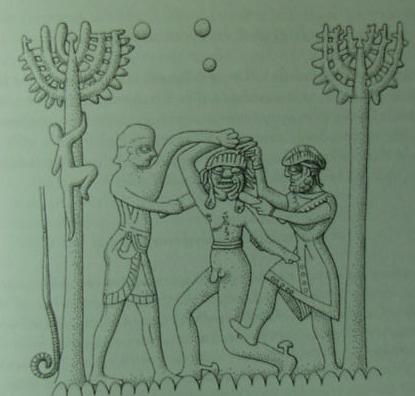
Genesis has God expelling Adam and Eve from the Garden in Eden and then posting the Cherubim to prevent re-entry into the Garden and accessing the Tree of Life. I understand that one of Adam's pre-biblical prototypes is Enkidu of the Epic of Gilgamesh and Eve is Shamhat the priestess-harlot of Uruk. She disrobes at a watering hole in the edin and Enkidu described as a naked hairy man who has no father or mother like Adam (he was created of clay by a deity) mates with her. When he tries to rejoin his animal companions the gazelles they flee from him, rejecting him as their companion. He thereupon agrees to accompany the harlot-priestess to Uruk; womankind has supplanted the animals as naked man's companion, just as a naked Eve supplanted Adam's animal companions in Eden's garden. Shamhat gives Enkidu part of her garments and they both clothe their nakedness and leave edin's watering hole. That is to say the naked man of edin, learned in edin it was wrong to be naked from a naked woman, he did not learn it was wrong to be naked from eating of a tree's fruit! In other words, an outraged god did _not_ expell the naked man and women of edin for covering their nakedness in edin. They left edin of their own freewill. No "cherubim" were stationed to deny the naked man and woman of edin re-entry to edin and its watering hole. We are told that when Enkidu and the gazelles appeared at the watering hole of edin the water was their "heart's DELIGHT," (Hebrew 'eden means "DELIGHT" according to some scholars, others claim "a place well-watered") but Shamhat the city-dweller characterized this location as a place of DESOLATION, bereft of shepherds. It was _not_ presented as a god's city-garden full of fruit-trees, but an arid wilderness with so little grass and herbage that not even shepherds would bother bringing their flocks into it to forge their animals! The Hebrews are recasting the Mesopotamian motifs via series of _inversions_ in order to challenge and deny them!
Eve is cursed by God for persuading Adam to eat forbidden food. Enkidu and Shamhat encounter later a shepherd's camp in the edin and they are offered as a courtesy bread and alcoholic drink. Enkidu BALKS at consuming these items, he has known only the eating of grass and drinking of water with his companions the gazelles! Shamhat steps in and tells Enkidu HE MUST EAT the bread and DRINK the alcolohic beverage set before him because it is the "custom of the land" (to refuse this act of hospitality on the shepherd's part would be a grave insult to one's hosts!). Enkidu subordinates his will to Shamhat's and consumes the bread and drink. We are told that he thereupon "becomes Human" (and a beast no longer), and he is given a change of garments (more befitting a man to wear?) by the Shepherds. Later, Shamhat is cursed by Enkidu, he blaming her for his "loss of innocence" and his his "impending death." He is to die for killing Huwawa the guardian of the Cedar trees. He asks Shamash his patron-god (a sun-god) to carry out his curse on Shamhat, seeking her "subordination to men" who will abuse her in her role as a harlot. However, he is rebuked by his god, being told the harlot has done him "only good," clothing his nakedness with a fine robe, giving him food and drink fit for a god, and introduced him to Gilgamesh his companion-in-arms! Thereupon a chastened Enkidu withdraws his curse and bestows a blessing on the harlot! Enkidu also cursed the Hunter who brought the harlot to edin's watering hole to entrap him with sex and separate him from his animal companions the gazelles. He asks the sun-god to DIMINISH the profits of the Hunter in all that he sets his hand to. Yahweh DIMINISHES the yield of the earth for Adam, instead brambles and thorns will be his reward. I understand that Enkidu's curse for Shamhat and the Hunter was recast by the Hebrews as Yahweh-Elohim cursing Adam and Eve. The Hunter that brought Shamhat to separate Enkidu from his animal companions became Yahweh presenting Eve to Adam. Enkidu's 6 days and 7 nights of copulation with Shamhat ends when he rises from her side to rejoin his animal companions. Perhaps his rising from her "side" was recast as Eve being made of Adam's "side" or "rib" (Hebrew tsela can mean rib, side, stumbling)? The sun-god Shamsah who REFUSED TO CURSE the naked woman of edin who taught the naked man of edin it was wrong to be naked became Yahweh-Elohim who DOES CURSE the naked woman of Eden for persuading Adam to eat food he earlier refused to eat, rather like Enkidu's balking at eating the bread proffered him in the edin's shepherds' camp.
Why are the Hebrews challenging, denying and refuting the Mesopotamian myths? They apparently objected to the notion that man was a "victim" of callous exploitive gods. They _inverted_ or _reversed_ the motifs and concepts and instead portrayed a loving, caring God (Yahweh-Elohim) as the "victim" of an unworthy and rebellious mankind (Adam and Eve).
My research suggests that as many as SEVEN LOCATIONS appearing in Mesopotamian myths are fused together and recast in Genesis' Garden in Eden myth: Three locations were man is made are (1) Eridu, (2) Nippur and (3) Babylon. Enkidu of The Epic of Gilgamesh has been recast as Adam and his "undoing" by Shamhat who has been recast as Eve was at a wateringhole in the steppe (Akkadian: seru, seri, serim; Sumerian: edin, edin-na) near (4) Uruk. Enkidu's (recast as Adam) forbidden access to trees occurs at a Cedar Mountain in the (5) Lebanon. Adapa's (recast as Adam and fused with Enkidu) failure to eat the "bread of life" which would bestow on him and mankind immortality was in (6) Heaven at Anu's abode. The motif of a woman made of a man's side recalls Nin-ti "the lady of the rib" at the island of (7) Dilmun/Tilmun (modern Tell el-Lahm east of Eridu).
Professor Blenkinsopp (of Notre Dame University) on Atrahasis and Gilgamesh motifs in Genesis:
"...just as Genesis 1-11 as a whole corresponds to the structure of the Atrahasis myth, so the garden of Eden story has incorporated many of the themes of the great Gilgamesh poem." (pp. 65-6. "Human Origins, Genesis 1:1-11:26." Joseph Blenkinsopp. The Pentateuch, An Introduction to the First Five Books of the Bible. New York. Doubleday. 1992. ISBN 0-385-41207-X)
Graves and Patai on the Hebrews borrowing the epithets and achievements of the pagan gods and ascribing them to Yahweh:
"The titles and attributes of many other Near Eastern deities were succesively awarded to Yahweh Elohim...Prophets and Psalmists were as careless about the pagan origins of the religious imagery they borrowed, as priests were about the adaptation of heathen sacrifical rites to God's service. The crucial question was: in whose honour these prophecies and hymns should now be sung, or these rites enacted. If in honour of Yahweh Elohim, not Anath, Baal or Tammuz, all was proper and pious." (p. 28. Robert Graves & Raphael Patai. Hebrew Myths: The Book of Genesis. New York. Greewich House. 1983 reprint of 1963, 1964 edition)
Lambert, has made a very important observation regarding the manner in which Mesopotamian mythographers worked:
"The authors of ancient cosmologies were essentially compilers. Their originality was expressed in new combinations of old themes, and in new twists to old ideas." (p.107, Wilfred G. Lambert, "A New Look at the Babylonian Background of Genesis." Journal of Theological Studies. Vol. 16 [1965]. pp. 287-300. Reprinted in Richard S. Hess & David T. Tsumra. Editors. I Studied Inscriptions From Before the Flood. Winona Lake, Indiana. Eisenbrauns. 1994)
I believe Lambert's observation can be applied to the Hebrews who were combining old themes and putting "new twists" to old ideas. My research indicates that, at times,"reversals" or "inversions"are occurring in the Hebrew transformation and reinterpetation of the Mesopotamian Creation Myths which sought to explain the origins of the Earth and of Mankind and why the gods sought man's demise in a Flood. These "reversals," as I call them, can take the form of different characters, different locations for the settings of the stories, and different morals being drawn about the nature of God and Man's relationship.
It is my understanding that the three great monotheistic faiths of the Western World, Judaism, Christianity and Islam, are each employing similar techniques. THEY EACH IN TURN ARE CHALLENGING EARLIER RELIGIOUS BELIEFS AND VIEWS REGARDING MAN'S RELATIONSHIP WITH GOD. The observations by Professors Wenham and Kramer are important here:
Professor Wenham, (Senior Lecturer in Religious Studies at the College of St. Paul and St. Mary in Cheltenham, England) has done a brilliant presentation, in my opinion, on explaining what Genesis is _really all about_, in its transformation and reinterpretation of the Ancient Mesopotamian concepts regarding the relationship between man and god. IT IS A POLEMIC, A CHALLENGE OF THE VIEWS held by the Mesopotamians of God's relationship with man, A CHALLENGE OF THE MESOPOTAMIAN VIEWS ON HOW MAN CAME TO BE MADE AND WHY HIS DEMISE WAS SOUGHT IN A FLOOD: THIS 'CHALLENGE' IS IN FACT _A DENIAL OR REFUTAL_ OF MESOPOTAMIAN BELIEFS.
Wenham (Emphasis mine in capitals and italics):
"Though Genesis shares many of the theological presuppositions of the ancient world, most of the stories found in these chapters are BEST READ AS PRESENTING AN ALTERNATIVE VIEW TO THOSE GENERALLY ACCEPTED IN THE ANCIENT NEAR EAST. Genesis 1-11 is a tract for the times challenging ancient assumptions about the nature of God, the world and mankind. (p. xlv) An understanding of ancient oriental mythology is essential if we are to appreciate the points Genesis 1-11 was making then (p. xlvi)...It is my conviction that many of our problems are caused by misunderstanding the original intentions of Genesis...many of the individual episodes in Genesis 1-11 may be seen to have a distinctly POLEMICAL THRUSTpolemical thrust in their own right, particularly AGAINST THE RELIGIOUS IDEAS ASSOCIATED MOST CLOSELY WITH MESOPOTAMIA (p. xlviii)...Viewed with respect to its negatives, Genesis 1:1-2-3 is A POLEMIC AGAINST THE MYTHICO-RELIGIOUS CONCEPTS OF THE ANCIENT ORIENT...the seventh day is not a day of ill omen as in Mesopotamia, but a day of blessing and sanctity on which normal work is laid aside. In contradicting the usual ideas of its times, Genesis 1 is also setting out a positive alternative (p. 37)...We have noted that the overall structure of the material in Genesis 1-11 finds its closest parallels in the Sumerian flood story and the Sumerian king list and in the Atrahasis Epic, all dated to 1600 B.C. or earlier (p. xliv)...This is not to say that the writer of Genesis had ever heard or read the Gilgamesh Epic: these traditions were part of the intellectual furniture of that time in the Near East, just as most people today have some idea of Darwin's Origin of the Species, though they have never read it." (p. xlviii. Gordon J. Wenham. Genesis 1-15. Waco, Texas. Word Incorporated. Word Biblical Commentary. 1987)
Over time, the "original" recast of the Mesopotamian myth, Adapa and the Southwind circa 2100 B.C. was forgotten ( I suspect Terah and Abraham ca. 2100 B.C. were responsible for the _recasting_ of these myths, _in order to deny, refute and challenge_ the Mesopotamian portrayal of how man came, once-upon-a-time to lose-out on an opportunity to acquire immortality because of trickery and deceit from a serpent deity, Enki). By the time the Exodus had occurred ca. 1540 B.C. and ca. 1260 B.C. (I understand two Exodus events were conflated into one), the Egyptian winged sphinxes with human heads had become the Cherubim, Yahweh's Mercy seat atop the Ark of the Covenant being a transformed Winged Sphinx throne aping somewhat the thrones of the Pharaohs, Phoenicians and Canaanites.
Finally, one other important note needs to be made: The Mesopotamians had no concept of a god expelling man from his city-garden. The senior gods, the Anunna or Anunnaki (Enki of Eridu and Enlil of NIppur) had made man to replace the lesser gods, the Igigi, who complained of their grievous toil in the gods' city-gardens, they having to dig canals and irrigation ditches and constantly dredge the canals of sediments to allow freshwater to reach the irrigated gardens of the gods. If man was expelled from the gods' city-gardens the gods would have to hoe the gardens themselves, a task they abhorbed, hence the reason they had made man in the first place to relieve themselves of such grievous toil. The Hebrews by portraying an enraged Yahweh-Elohim as EXPELLING man from his garden for rebellion are _refuting_ the Mesopotamian understanding of why man was made. The gods NEEDED MAN to care for their city-gardens to give them rest from toil and to feed them the garden produce in temples. Yahweh does NOT NEED MAN to plant, harvest and present food for his sustenance like the Mesopotamian gods. Yahweh does NOT NEED MAN to work in his garden to achieve His Sabbath Rest (from agricultural toil). Yet Yahweh demands to be fed twice a day like a Mesopotamian god at Mount Sinai in the Tabernacle Tent and later at the Temple in Jerusalem. Genesis portrays Yahewh's Garden in Eden as "idyllic," no grievous, burdensome toil faces Adam, another refutation of Mesopotamian beliefs that work in a god's city-garden was A BACK-BREAKING HELL. The Mesopotamian gods ruthlessly exploited man whereas Yahweh loves man and does not exploit him. The Igigi gods threatened rebellion against Enlil and Enki and were REMOVED from a god's garden for this act of rebellion. Man was created to replace them. Man would now serve both the Anunna and Iggi gods. Why did the Igigi rebel? They had been given NO REST from the toil imposed upon them by the Anunna gods. They had complained of this for 40 years at Nippur. When man is created we are informed that the noisey clamor or complaining of the Igigi is transferred to man. Man's constant noise disturbs Enlil who can get no rest by day or sleep by night. He decides to instigate a world flood to destroy man, to thereby get his rest from the noise. With man's demise on the seventh day of the Flood ALL the gods REST, for man's noise no longer disturbs them. That is to say, man's noise was that of the Igigi: He wanted a REST FROM GOD-IMPOSED TOIL as enjoyed by the gods. They refused him ANY REST and instead sought his destruction with a flood. Unlike the Mesopotamian gods, Yahweh cares about man and provides him a SHABBAT/SABBATH (which reoccurs every seventh day) to rest on. Instead of ALL THE GODS RESTING ON A SEBUTI DAY after man's demise (Se-bu-ti in Akkadian meaning "seventh" cf. p. 57 line 206 and p. 196 under shapattu or "fifteenth day." W. G. Lambert & A. R. Millard.Atra-Hasis, The Babylonian Story of the Flood. Winona Lake, Indiana. Eisenbrauns. 1999 reprint of 1969 edition by Oxford University Press), one God (Yahweh) rests on a seventh day, after CREATING A WORLD and MAN vs. the Gods DESTROYING A WORLD and Man. Now, dear reader, you know WHY the Hebrews REFUTED, DENIED, and CHALLENGED the Mesopotamian myths regarding why man was made, placed in a god's garden and why his demise was sought in a flood. The Hebrew Shabbat (Sabbath) is then -for me- a recast of the SEVENTH DAY (the se-bu-ti day) of the Flood, when all the gods rested because man's noise no longer disturbed them, he being destroyed except for those on the great boat built by one man, Ziusudra of Shuruppak who was warned by Enki to save the "seed of man and animals" as the gods intended man's and animal kind's destruction with a flood. Ziusudra was recast as Noah.
So, dear reader, it is _my understanding_ that the Hebrews have challenged _point by point_ the Mesopotamian understanding of why, where, when and how man came to be made, placed in a god's garden, denied immortality and then his demise sought in a flood. Also challenged by the Hebrews is the Mesopotamian understanding that "all" the gods and goddesses rested on a "seventh" day, a se-bu-ti day having achieved their rest from man's noise by annihilating him. Yahweh LOVES man vs. the Mesopotamian gods DESPISING man and seeking to destroy him with a flood when he cries out to them for a "REST" from the god-imposed back-breaking toil in their city-gardens which are surrounded by the uncultivated plain or steppe called in Sumerian edin or edin-na (said term being later succeeded by the Akkadian seru, seri, or serim).
The Mesopotamian myths understood man had been created to work in a god's city-garden at Nippur (Enlil) while another has the event at Eridu (Enki's city-garden). The Hebrews, AGAIN, ARE REFUTING this concept, for they have Yahweh's garden in the midst of a wilderness, unassociated with a city. Man, in Genesis, lives in cities AFTER the expulsion from the Garden in Eden (the first city being built by Cain). Adam enjoys the companionship of wild animals with no fear of harm. Then Eve is presented to Adam and becomes a more fit companion. It is my understanding that Genesis' imagery of a God's garden being in a wilderness rather than associated with a city, is preserving somewhat Enkidu's meeting of Shamat at a wateringhole in the wilderness (Akkadian seru, Sumerian edin). Enkidu is naked, his compaions are wild animals, he is "undone" by a naked Shamhat. I understand Enkidu is one of several prototypes of Adam and Shamhat has been recast as Eve. The wateringhole in the wilderness frequented by naked man and his animal companions has been recast as the Garden in Eden in the midst of a wilderness.
Scholars are divided on the origins of the word eden (Hebrew: `eden). It has been translated to mean 'delight'. Some have suggested it is derived from Aramaic `dn meaning 'a place well-watered' or 'abundant in water'.
Tsumura on Eden's 'contested' etymology:
"Etymology of `eden. In light of the new information from Fekheriyeh, Millard, Greenfield, and others have recently suggested that the term `eden means 'a place well-watered place'. This fits the context of Geneis 2 very well. There are three theoretically possible explanations for the etymology of the Hebrew `eden:
(a) Sumerian Loanword directly into West Semitic. The Sumerian edin 'plain', has been suggested as its origin. But since Sumerian presumably has no phoneme /`/, it is not likely that the Sumerian edin was borrowed directly into Canaanite as `eden or the like. Also, the meaning 'plain, steppe', or uncultivated land does not fit the context of Genesis well.
(b) Sumerian Loanword via Akkadian into West Semitic. It has been suggested that the Sumerian edin was borrowed through Akkadian edinu. While this has been a common view for the etymology, Hebrew `eden cannot be a loanword from or via Akkadian edinu, since Akkadian has no phoneme /`/ either..."
(c) Common West Semitic. The root *`dn, which appears in the Fekheriyeh Inscription, in a Ugaritic text, in the divine epithet h`dn in Old South Arabic, as well as in the Arabic verb `adana, probably has the literal meaning 'to make abundant in water supply'. Hence, the Hebrew `eden probably means 'a place where there is an abundant water supply' (cf. Gen 13:10). The term *`eden (plural `adanim in Psalm 36:9), which means 'pleasure, luxury', has the same etymology as Eden, though the Massoretic Text seems to distinguish `eden from *`eden."
(pp. 40-41. David Toshio Tsumura. "Genesis and Ancient Near Eastern Stories of Creation and Flood: An Introduction." pp. 27-57, in Richard S. Hess & David T. Tsumra. Editors. I Studied Inscriptions From Before the Flood. Winona Lake, Indiana. Eisenbrauns. 1994)
Wallace on Eden's 'contested' etymology:
"Two explanations have been proposed for the origin of the name `eden, "Eden": (a) that it derives from the Akkadian word edinu, "plain, steppe," which in turn is a loan word from Sumerian eden; (b) that is is connected with the West Semitic stem `dn occurring in several languages, having to do with "luxury, abundance, delight, or lushness"...However, several objections have been raised. First, Genesis 2-3 refers to Eden in terms of a fertile garden or oasis. The transference to this meaning from a Sumerian word for "plain" or "steppe" is obscure. Secondly, while the word eden is common in Sumerian, the Akkadian equivalent edinu is attested only once...The usual Akkadian equivalent to Sumerian eden is seru. From available evidence it seems that edinu was an extremely rare word in Akkadian and it is not a likely candidate for further borrowing into biblical Hebrew. The craft of a narrator or scribe in adopting such a word would be lost to nearly all hearers or readers."
(p. 281. Vol. 2. Howard N. Wallace. "Eden, Garden of." David Noel Freedman. Editor. The Anchor Bible Dictionary. New York. Doubleday. 1992)
In the Mesopotamian myths (The Eridu Genesis Myth) man wanders naked in an uncultivated wilderness plain or steppe (Akkadian: seru and sometimes edinu, Sumerian: edin or edin-na) with wild animals for companions. It is my understanding that Hebrew `eden is recalling the Sumerian edin. But, as I have noted before, the Hebrews are _denying and refuting_ the Mesopotamian myths. At Ebla (Tell Mardikh) in Syria the Old Babylonian edin (ca. 2000-1500 B.C., OB Nippur Lu 823) is rendered eden (Early Dynastic IIIb, 3000-2500 B.C. Ebla Sign List 55), meaning a "steppe or plain". I suspect that the Hebrews took the Syrian eden and added a phoneme /`/ to it rendering eden as `eden causing the semi-arid, desertlike steppe to become a "well-watered delightful place". Why? _The Hebrews are refuting Mesopotamian beliefs!_ The gods despised man. In the Eridu Genesis myth naked man is a wild animal, his companions are not the gods, but wild animals naked like himself. The gods do not give man any fruits from their city-gardens to eat, man must fend for himself, HE EATS GRASS and laps water like the other beasts. The Hebrews apparently objected to this portrayal of man. Edin (Syrian Ebla's eden) is a place of desolation, wild animals roam it, brigands, cut-throats and murdering outcasts like Cain from civilized society also inhabit it. Dumuzi was slain by demons in the edin at his sheepfold. Edin/Eden is not an idyllic place for man in the Mesopotamian myths. I suspect that the Hebrews, in refuting all this, added the phoneme /`/ to the Syrian eden rendering it into a new `eden, a place of "abundance and lushness, delightful and well-watered". God loves man, he would not place man in a desertlike wilderness to eat grass like a beast and abandon him! In the Mesopotamian understanding the uncultivated edin is where shepherds graze their flocks (like Dumuzi). The "good life" is in the cities (not the edin) built according to the myths by the gods for thier habitation _before_ man's creation. The Hebrews' ancestors are portrayed as wandering shepherds, living in tents, as such their habitation would the edin. Perhaps these "shepherds-of-edin" were offended by the Mesopotamian myths concocted by "city-dwellers", glorifying city-life over shepherding in the edin? Thus the shepherds of edin concocted a counter-argument, glorifying life in the edin and denigrating city-life? Cain the murderer builds the world's first city and man descends into corruption and sin. So the Hebrews' shepherding ancestors are refuting, denying and challenging the Mesopotamian world view regarding primitive naked man's life in the uncultivated edin being a curse.That is to say, the Hebrew shepherds are glorifying their own life style as against that of life in cities glorified by the city-dwelling Mesopotamians.
What better way to refute man's presence, in the beginning, as in an uncultivated semi-arid plain or steppe called the eden/edin with wild animals for companions, than to portray his presence with non-threatening wild animals as being in a 'well-watered' place of 'delight' an `eden where exists a god's garden? That is to say, in the Mesopotamian myths naked man and his wild animal companions who do him no harm are associated with the uncultivated steppe or plain called edin/seru, whereas in Genesis naked man and his wild-animal companions live together with no fear in a state of bliss in a god's "delightful-well-watered-garden"! The Mesopotamian myths do not portray naked man enjoying the company of wild animals in their city-gardens (which were never called edin or seru), this relationship exists _only_ in the uncultivated steppe/plain known as the edin or seru. The god's city-gardens are off-limits for foraging by wild animals!
Enkidu, the naked wildman who's companions are wild animals, roams the uncultivated steppe (Akkadian: seru, Sumerian: edin). It is stated however that Enkidu's delight is to enjoy the water of this steppe with his animal companions. So, in a sense, those scholars who argue that the Hebrew `eden means either "delight" or a "place well-watered" would appear to have this imagery attested "somewhat" in the description of the uncultivated edin/seru being a place possessing wild animals who "delight" with a naked man (Enkidu) in a "well-watered" location (a wateringhole) found in this wilderness. As noted by earlier scholars Genesis' `eden appears not to be located in a city as a god's city-garden, instead is appears to be a well-watered oasis in the midst of a semi-arid wilderness, which aligns somewhat with the Sumerian uncultivated steppe or plain called edin. Pritchard on the motifs of "delight" and "water" associated with naked man and his animal companions in the uncultivated steppe (emphasis mine in CAPITALS):
"The wild beasts came to the watering place to drink.
The creeping creatures came, their heart DELIGHTING IN WATER.
But as for him, Enkidu, born in the hills-
With the gazelles he feeds on grass,
With the wild beasts he drinks at the watering place,
With the creeping creatures his heart DELIGHTS IN WATER-"
(p. 44. "The Epic of Gilgamesh." James B. Pritchard. Editor. The Ancient Near East, An Anthology of Texts and Pictures. Princeton, New Jersey. Princeton University Press. 1958. Library of Congress Card 58-10052. Paperback)
At this watering hole, for several days, patiently waits Shamhat the Harlot, brought by the Hunter from Uruk to ensnare Enkidu with sex. He has been told by Gilgamesh that after having had sex with the Harlot Enkidu's animal companions will flee from him, Enkidu will thereupon seek companionship with womankind and forevermore be alienated from the wild animals. Upon seeing Enkidu at the wateringhole she disrobes at the Hunter's urging and Enkidu upon gazing at her voluptuous nakedness is consumed with desire and sleeps with her for six days and seven nights. When he attempts to join his animal friends they flee. A rejected Enkidu returns to the Harlot, she says to him "You are like a god, why roam with animals, leave this 'place of desolation' berift of shepherds, come with me to Uruk and meet Gilgamesh." He agrees, and the Harlot divides her garments covering her and Enkidu's nakedness. He puts his hand in hers and she leads him "like a mother" from the steppe. At a shepherd's camp he is offered bread and alcoholic drink. He balks at consuming this for he has known only the eating of grass and drinking of water with his animal companions. The Harlot tells Enkidu "Eat the bread, drink the alcoholic drink, for it is the custom of the land." Submitting to her words he eats the bread and consumes the alcoholic drink. He is thereupon declared to be HUMAN (and like a beast no longer). He anoints his hair and puts on a change of clothes befitting a man and departs with Shamhat for Uruk. I understand Adam's eating forbidden food at Eve's urging is a recast of the Harlot urging Enkidu to eat bread and to drink an alcoholic drink. In the "original" Mesopotamian myth a god was NOT outraged at a naked man's consumption of forbidden food (food grown in the gods' city-gardens is not for wild animals to forage upon). A god was NOT outraged when man clothed himself after eating forbidden food. Realizing he is to die for killing Huwawa the guardian of the cedar mountain and accessing forbidden cedar trees, Enkidu curses the Hunter and Harlot, blaming them for robbing him of his innocence and virtue and separating him from his animal friends, setting off a chain reaction of events culminating in Huwawa's death. He asks the sun-god to carry out his curse. He wants a "diminishing" of profit for the hunter and the abusement by man of the Harlot. An outraged sun-god rebuffs the request telling Enkidu: "How dare you curse my harlot, she did you good, gave you food fit for a god, wine fit for a king, clothed your nakedness with a noble garment, gave you Gilgamesh for a companion!" A chastened Enkidu withdraws his curse and replaces it with a blessing. So, in the "original" myth a god did NOT curse the woman who introduced a naked man to forbidden food, NOR did this god curse man for acquiring clothing to cover his nakedness. The Hebrews have recast Enkidu's curse for the Hunter and Harlot into Yahweh's curse for Adam and Eve. Adam's crop yields will be DIMINISHED (as the Hunter was to have his profits DIMINISHED), Enkidu's DESIRE for the Harlot being his "undoing" (he subordinating his will to hers) becomes Eve's DESIRE for her husband being her "undoing" for now she will be subject to her man who will rule over her. The wateringhole where wild animals and a naked man had THEIR DELIGHT IN WATER, in the midst of a "place of desolation, berift of shepherds" becomes Genesis' `eden, associated with DELIGHT and a PLACE WELL-WATERED.
For over a hundred years various Liberal Scholars have suggested the Sumerian word edin meaning the uncultivated semi-arid desert-like plain or steppe about the Tigris and Euphrates rivers is what lies behind Genesis' Eden. I am in agreement with this assessment. Every Sumerian city had its god's city-garden made possible by canals and irrigation ditches radiating from these two streams. In myths said rivers and canals being dug-out originally by the Igigi gods before man's creation. The gods according to these myths had also planted city-gardens before man's creation, to provide food for themselves, as they dwelt in the cities of Akkad and Sumer (Lower Mesopotamia, today's Iraq).
I understand that the Hebrews in recasting the Mesopotamian motifs, have taken the many city-gardens (each belonging to a local god or goddess) of Akkad and Sumer, each city and its city-garden being "surrounded by" an uncultivated edin, the plain/steppe between the Tigris and Euphrates, and fused them into _one_ Garden in Eden.
Whereas the Mesopotamian myths understand a god's garden is almost always associated with the city the god dwells in, Genesis refutes and denies this by having the first city built by Cain after the expulsion from the Garden in Eden. That is to say, the Garden in Eden is not associated with a city-garden belonging to a god, instead it lies all by itself in the edin, the uncultivated semi-arid wilderness (variously described as a steppe or plain). Please note my preference in using the term "Garden _in_ Eden" rather than "Garden _of_Eden." I do not understand the Garden's name to be Eden. I understand Eden is a semi-arid region through which flows a river that waters a god's garden:
Genesis 2:8 TANAKH (Emphasis mine):
"The LORD God planted a garden _in_ Eden, in the east, and placed there the man whom He had formed."
(TANAKH, The Holy Scriptures. Philadelphia, Pennsylvania. The Jewish Publication Society. 1988 [5748 since the Creation])
In recasting the Mesopotamian myths in order to refute them the Hebrews have given "new twists to old ideas or motifs." The Garden in Eden is a recast of Eridu and Nippur where man was made to serve in a god's garden replacing the Igigi gods as laborers. It also fuses Anu's heavenly abode with a Lebanese Cedar Mountain sacred to the gods, and a watering hole in the uncultivated steppe land (Akkadian seru, Sumerian edin or edin-na) near Uruk where a naked Enkidu is "undone" by a naked Shamhat. The Edenic Serpent is a recast of Enki (Ea), Anu, Ningishzida and Dumuzi. The Cherubim are recasts of Ningishzida, Dumuzi and Huwawa. Adam is a recast of Adapa and Enkidu. Shamhat has been recast as Eve. The "bread of life" and the "bread of death" have been recast as "tree fruits." A man's forbidden access to trees is the cedars guarded by Huwawa, accessed by Enkidu, who's death is ordered by Enlil. Yahweh-Elohim is a recast of Anu (An) in heaven, Enlil (Ellil) of Nippur, Enki (Ea) of Eridu, the Hunter of Uruk, and Shamash (Utu) the sun-god who at Uruk refused to curse Shamhat at Enkidu's request. In recasting these Mesopotamian motifs the Hebrews are _denying, challenging, and refuting_ the Mesopotamian concepts regarding how man came to created, his purpose in life, why he is not immortal, why his demise was sought in a flood, and how a seventh day of rest for the gods came about.
Below is the earlier, original account (10 Nov. 2001 to 02 Aug. 2006) of the pre-biblical origins of the Cherubim as Winged Sphinxes:
Genesis opens with the story of God's having planted a garden in the East in a place called Eden. He evidently places two trees within this garden, one is "the Tree of Knowledge of Good and Evil", the other is "the Tree of Life". God then stations the Cherubim to deny access to the latter tree by man. This brief article, employing a Secular Humanist and Anthropological point of view, will explore the Ancient Near Eastern motifs and concepts possibly lying behind Genesis' portrayal of the Cherubim and their possible existence in ancient art forms.
Not generally known to the public at large is that Cherubim have been determined not to be angels with human forms and wings. Nor is the public aware of the pre-biblical origins of Cherubim. This brief article attempts to address these issues.
Many today envision Cherubs to be naked little children with halos and wings, frequently seen on Valentine's Day cards. These representations arose in Renaissance times, and are based on still earlier representations found in Roman art forms.
The Jewish historian, Flavius Josephus, writing during the 1st century A.D.stated that in his day no one knew what a Cherub looked like. This is a remarkable statement on his part, he claimed to be of a priestly lineage, well-educated in Jewish Torah and traditions, and if anybody would have known what a Cherub would look like, it ought to have been Josephus !
Josephus on the cherubim:
"He also dedicated for the most secret place, whose breadth was twenty cubits, and length the same, two cherubims of solid gold...but nobody can tell, or even conjecture, what was the shape of these cherubims." (Antiquities 8.3.3. William Whiston, translator. The Life and Works of Flavius Josephus. New York. Holt, Rinehart & Winston. Ca. 1970)
This is a most remarkable admission on Josephus' part in light of Ezekiel's very detailed description of a Cherub (Ez 1:1-25). Josephus makes mention of Ezekiel (Antiquities 10.5.1), so he should have been aware of Ezekiel's description of the Cherubim, yet he avers that no one knows their shape or form ! Ezekiel portrayed the Cherub as having a human-like body, with four arms, hands, and legs, but with some remarkable non-human features- that is, the head had four faces, a calf, an eagle, a lion and a human. It possessed two legs whose feet were cloven like a bull's. It had four wings and was accompanied by a spinning wheel capable of flight. Four Cherubim, each with its wheel were under a firmanent supporting the throne of God and evidently provided locomotion for the throne.
I have been unsuccessful in finding "an exact" representation of Ezekiel's Cherubim in any Ancient Near Eastern art form, be it a painting, statue, seal, jewelry or bas-relief. There are however some forms that can be said to "somewhat" reflect Ezekiel's imagery. Mesopotamian art knows of gods or genii with human forms, with four wings, multiheaded, and with cloven bull's feet. Evidently Ezekiel's vision of the Cherubim is unique to him. Please click here for a picture of Ezekiel's cherub and its "possible" Ancient Near Eastern prototypes from the 9th-7th centuries B.C.
The Renaissance Italian artist, Masaccio (ca. 1424-1426 A.D.) rendered a flying Cherub in human form with two wings and bearing a sword, driving a naked Adam and Eve from the Garden of Eden in a wall mural on one of Florence's churches.
Christianity "began" in the 1st century A.D., by the 4th it became the "official" state sponsored religion of the Roman Empire. Understandably, Christians in their art desired to portray cherubim. Not knowing their form, as noted by Josephus, they settled upon a form very familiar to the Roman world, winged Victories, called Nikes in Greek art. These were women with wings, frequently shown holding a victor's wreath or a shield on which they inscribed a victory over the enemy. In Roman art they appeared frequently partially clad, in long flowing robes, the torso being exposed to reveal breasts. Christian modesty required a fully clothed body, so cherubim as a species of angel, were fully clothed. Today many Christians visualize the Cherubim as either naked children with wings (so-called "Cupids") or mature adult angels fully clothed with wings and long flowing gowns, based on Greek and Roman Nikes and Victories (Latin: Victoria).
In the 19th century A.D. it was quite common for artists to render the Mercy Seat atop of the Ark of the Covenant as consisting of two angels with human features, bowing towards each other with extended wings, God being envisioned by the artists as seated above the wings of his angels. One can still see this artistic rendering today in many books on the Bible.
A related spin-off to the 19th century A.D. artist renderings of the Mercy Seat on the Ark of the Covenant, is that of some 20th century artists, who have transformed the two bowing angels into Egyptian goddesses, who in a kneeling position, extend their wings toward each other; God being envisioned as sitting within the coverlet of their extended wings. This is no doubt influenced by representations of Pharaoh, "a Living God," who is sometimes portrayed as embraced by the covering wings of said goddesses/genii.
Contrary to all of the above representations of Cherubim is modern Secular Humanist scholarship's understanding that these beings are not human-like angels or Egyptian genii at all, but four-legged beasts.
Archaeologists have unearthed objects in Phoenicia and Canaan from the period of the Late Bronze Age (1540-1200 B.C.) showing kings and rulers seated on thrones whose side arms consist of winged four-legged beasts, possessing a lion's body and a human head. They are known in Egyptian art as Sphinxes. Today's scholars thus understand that the Mercy Seat was a winged Sphinx throne modeled after Late Bronze Age thrones found in Phoenicia and Canaan.
The late Professor Albright on the Cherubim :
"Today we think of a cherub as a tiny winged boy, following the tradition of Renaissance artists. This conception was directly borrowed from pictures of Graeco-Roman "loves" or Erotes, familiar to us from excavations of Pompeii. The actual appearance of the cherubim of the Old Testament was actually forgotten before the time of Christ, and Josephus (first century A.D.) says that "no one can tell what they were like."
Since the veil of the Tabernacle was decorated with embroidered cherubim, the walls and the religious objects of Solomon's temple lavishly adorned with them, we ought to be able to identify them in contemporary Syro-Palestinan art. The account of of the Ark of the Covenant shows that only a creature with wings can be considered. If, therefore, we study all known representations of animals and hybrid creatures, partly animal, we find one which is more common than any other winged creature, so much so that its identification with the cherub is certain: that is the winged sphinx or winged lion with human head. In Egypt the wingless sphinx and the griffin appear; in Babylonia and Assyria the winged bull with a human head prevails; but in Syria and Palestine it is the winged sphinx which is dominant in art and religious symbolism.
The God of Israel was often designated as "He who sitteth (on) the cherubim" (1 Samuel 4:4, etc.). The conception underlying this designation is well illustrated by representations of a king seated in a throne supported on each side by cherubim, which have been found at Byblus, Hamath and Megiddo, all dating between 1200 and 800 B.C. One shows King Hiram of Byblus (period of the Judges) seated upon his cherub throne. Pottery incense altars found at Taanach and Megiddo are archaeological parallels to the wheeled lavers ("bases") of Solomon's temple, which were decorated with lions and cherubs, according to 1 Kings 7:36.
The primary function of the cherub in Israelite religious symbolism is illustrated by two biblical passages. A very ancient hymn, found twice in the Bible, has the words, "And He rode upon a cherub and did fly" (1 Samuel 22:11; Psalm 18:11); the second is Ezekiel 10:20. The conception of the deity as standing or enthroned on an animal or hybrid creature was exceedingly common in the ancient Near East, but it was most common in Syria and Northern Mesopotamia between 2000 and 700 B.C. In Babylonia the figure of a diety is replaced in certain cases by a winged shrine and later by a thunderbolt. So, in Israelite symbolism between 1300 and 900 B.C., the invisible Glory (Jehovah) was conceived as enthroned upon the golden cherubim or standing on a golden bull." (pp.95-97. William Foxwell Albright. "What Were the Cherubim ?" G. Ernest Wright & David Noel Freedman. Editors. The Biblical Archaeologist Reader. Chicago. Quadrangle Books. 1961 [a selection of articles from The Biblical Archaeologist magazine])
The Bible noted that the Cherubim's wings were "extended," and this is a feature of the Late Bronze Age thrones. The winged sphinxes' wings extend to become side arms, so that the god seated on the throne, can be said to be enveloped by the Cherubim's wings- perhaps this feature explains the statement made of the King of Tyre in Phoenica, and the allusion to a "covering Cherub" ? Phoenician Cherubim thrones exist in stone as bas-reliefs and as three-dimensional thrones as late as the 3rd century B.C. Phoenician art portrays gods and goddesses seated in these thrones in bas-reliefs, seals, and three-dimensional forms.
The origins of the winged Sphinx has been identified as Egypt, and the period of the 4th Dynasty. The most famous sphinx is that of Giza, which guards the pyramids. Egyptian, Phoenician and Canaanite art rendered sphinxes/cherubim in male and female forms. Males bore a beard, females were beardless and at times with a row of breasts on the underside of their body (like a female lion). The Egyptians almost always rendered "winged" Sphinxes as having their wings lying flat against the back, whereas the Phoenician and Canaanite versions have the wings extended and fully open.
For the Late Bronze Age period we have representations of Pharaohs on winged sphinx thrones. These creatures tended to represent "The Living God" -Pharaoh- annihilating Egypt's enemies, trampling upon fallen warriors in battle scenes made in bas-relief. I note that Israel carried the Ark of the Covenant into battle as a palladium to insure victory against the Philistines. On other occasions the winged sphinxes are shown in a three-dimensional form, striding at the side of Pharaoh's throne, some times with a striding three-dimensional lion below them.
I suspect with other scholars that the winged sphinx thrones of "the Living God" (Pharaoh) were introduced to Phoenicia, Canaan and Syria via Egypt's having made this area part of her Asiatic Empire under the New Kingdom (ca. 1560-1140 B.C.). Perhaps the Phoenicians took the lead in transforming the Egyptian winged sphinx thrones into cherubim thrones by portraying the wings as extended rather than flat against the back (the Bible appears to be quite emphatic on this point, that the wings of the cherubim are "extended").
The Bible describes the Mercy Seat atop the Ark of the Covenant as possessing two cherubs who "face each other" with their wings extended. This statement has led to some confusion in modern artistic attempts to render the Mercy Seat. I recall one rendering that had two winged sphinxes facing each other. This of course appears to contradict the biblical description of the cherubim as being the sides of the seat. This rendering has God envisioned as hovering in the space between the two winged sphinxes.
My investigations into winged sphinx thrones of the Phoenicians and Canaanites has failed to find an example of the faces of the sphinxes "facing each other" as described in the Bible. Yet, in Ancient Near Eastern art forms, winged sphinxes with wings extended are frequently encountered with their heads "turned to one side", instead of looking straight ahead. In my rendering of God's Mercy Seat atop the Ark of the Covenant, I have employed this observation of heads turned to one side and have attempted to reconcile Holy Writ's description with the archaeological evidence.
We learn from the Bible that with the fall of Jerusalem in 587 B.C. and the destruction of the Temple, that the last notice is made of the Ark of the Covenant. We are informed that the Babylonians took all the treasure with them. The Ark was not among the items returned to the Jews upon their return by Cyrus ca. 538 B.C. Evidently it was never remade and with the passage of time, the forms of the Cherubim came to be forgotten.
What is most distressing is Ezekiel's description of the Cherubim- it is not supported by the archaeological evidence of the winged sphinx thrones of the Late Bronze and Iron Ages. Being a prophet, he should have known the true form of these creatures. I have posited elsewhere that Ezekiel may possess redactions as late as 164 B.C. or even 80 A.D.(he knows Daniel which is dated ca. 164 B.C. by some Secular Scholars), and that the description of the Cherubim is of these later periods, written up for an audience curious to know what a cherub looked like- as noted by Josephus who said no one knew their form in his days.
In the Garden of Eden story Cherubim are described as guarding or barring the way to the the Tree of Life. Two winged sphinxes appear frequently in Phoenician art forms in association with a sacred tree, flanking either side of it. They also appear in Assyrian art forms with a sacred tree- in one case a winged sphinx attacks a sword-wielding winged genii approaching the tree. A bas-relief from South Arabia, the Yemen, where some Jewish traditions place the Garden of Eden, shows two winged sphinxes flanking the sacred tree with palm-trees in the background (Palm-trees and Cherubim being portrayed in the Temple of Solomon).
The word Cherub is believed to be derived from karibu, meaning "intercessor" in Mesopotamian texts, who is commonly portrayed in art as a sphinx, griffin, or winged human creature (Vol. 1. p. 131. T. H. Gaster. "Cherubim and Seraphim." George A. Buttrick. Editor. The Interpreter's Dictionary of the Bible. Abingdon Press. Nashville.1962)
Another deriviation for the word Cherub :
"The word cherub (cherubim is the Hebrew masculine plural) is a word borrowed from the Assyrian kirubu, from karâbu, "to be near", hence it means near ones, familiars, personal servants, bodyguards, courtiers. It was commonly used of those heavenly spirits, who closely surrounded the Majesty of God and paid Him intimate service." ("Cherubim." The Catholic Encyclopedia, cf. http://www.newadvent.org/cathen/03646c.htm )
2 Samuel 22:11 and Psalm 18:10 portray God riding upon a cherub, and an allusion is made that the Cherub's moving wings are the source of the earth's winds.
God is described as riding upon a Cherub (2 Samuel 22:11 RSV) :
"He flew on the back of a Cherub; he swooped down on the wings of the wind."
The ancients understood that wind was caused by the beating wings of mythical beasts. In a Mesopotamian myth Adapa uttered a curse breaking the wing of the South Wind, stopping sea breezes reaching Lower Mesopotamia (from the Persian Gulf).
A cylinder seal ca. 8/7th century B.C. shows gods or genii riding upon the backs of Cherubim who in turn are associated with a Sacred Tree.
King David drew up plans for a golden chariot to be drawn by the Cherubim for the Temple of Solomon (1 Chron 28:18). Such a motif appears in Phoenician art of the 8th century B.C.
Ancient Near Eastern art forms do not show gods or goddesses riding on mythical beasts as a rider would be astride a horse's back. Instead they are either in a throne which is borne by a striding beast, or they stand upon the striding beast's back. So Yahweh-Elohim probably was envisioned as either sitting in a throne which was upon the back of a winged sphinx or else he was standing upon a winged sphinx's back.
Illustrations :
(Please click on the blue underlined url which will take you to the image)
Roman "Cupids," (Greek : "Eros") naked, with wings -associated with love and sex- were borrowed by Early Christians and associated with Christian themes. They lie behind today's Cherubs appearing on Valentine's Day cards.
Renaissance Cherub by Masaccio (Church of Santa Maria del Carmine, Florence, Italy. Ca. 1424-1428 A.D.)
19th Century A.D. rendering of Cherubim Mercy Seat atop the Ark of the Covenant
20th Century A.D. rendering of Cherubim Mercy Seatas kneeling Angels.
Mattfeld Proposal for the Mercy Seat (Side View) (Front View). I have noted that Cherubim/Winged Sphinxes are shown at times with turned heads or faces, and have employed this concept in my rendering of the Mercy Seat, having the Cherubim "facing each other".
The Egyptian Winged Sphinx thrones of Pharaohs Amenhotep III and Thuthmoses IV, probable prototypes behind Late Bronze Age (1560-1200 B.C.) winged sphinx thrones of Phoenicia, Canaan and Israel. The Egyptians also had portable thrones for Pharaoh with striding winged sphinxes at the sides, rather like Yahweh-Elohim's "portable" throne, called the Ark of the Covenant. Romer, a Professional Egyptologist, who has excavated a number of sites in Egypt, is of the understanding that the Ark of the Covenant is borrowing from the Egyptian portable thrones used for Egyptian gods and Pharaoh.
Romer :
"As Jehovah and his people wandered in Sinai, he still had to be understood by his chosen people...the Israelites made him a carrying chair, the Ark, adapted from the designs of the chairs that carried Egyptian gods and Pharaohs." (p.61. John Romer. Testament, The Bible and History. New York. Henry Holt & Co. 1988. ISBN 0-8050-0939-6)
Mettinger shows the Egyptian god Amun-Re, in a carrying chair of a "box-like nature," like the Ark, with two Sphinxes striding on either side (mainstream scholarship understanding the Hebrew Cherubim are Sphinxes) atop the backs of two striding Lions. These images are from bronze plaques from Memphis, ca. the 6th centry BCE (cf. figures 2.10-11. p. 52. Tryggve N.D. Mettinger. No Graven Image ? Israelite Aniconsim in Its Ancient Near Eastern Context. [Coniectanea Biblica, Old Testament Series 42], Almqvist & Wiksell International. Stockholm, Sweden. 1995. ISBN 91-22-01664-3, pbk). Mettinger also explores the Winged Sphinx thrones of the Phoenician gods as possible exemplars of Yahweh's Mercy Seat (cf. figures 5.8-10. pp.102-103. Mettinger 1995).
Phoenician winged sphinx thrones, probably influenced Canaanite thrones which in turn influenced Israel's Mercy Seat atop the Ark of the Covenant. Romer in speaking of the winged sphinx throne found engraved upon an ivory from Late Bronze Age Megiddo, noted that the throne possessed "Egyptianizing" features. Please click here for some 15 different scarabs (seals) of breath-taking Phoenician manufacture showing kings or deities seated on winged sphinx thrones (most are of the Persian and Hellenistic periods, the 6th-1st centuries B.C.).
Romer :
"There is a lively drawing of one of these courts cut into a strip of Syrian ivory; the local ruler sits proudly upon an Egyptianesque throne; all around is his little court..." (p.74. John Romer. Testament, The Bible and History. New York. Henry Holt & Co. 1988. ISBN 0-8050-0939-6)
Cherubim thrones appear on Phoenician seals,and scarabs, bas-reliefs in stone, and as three-dimensional stone thrones down to the 2nd century B.C. Gods and goddesses apear in these thrones, both Egyptian and Phoenician. Solomon's Temple had colossal Cherubim made of wood, covered in gold for the Holy of Holies.
Cherubim/winged sphinxes associated with a sacred tree, which may be rendered as either a heavily stylized Palm-tree also called a palmette, drawing upon Mesopotamian motifs, or a Lotus-tree, drawing upon Phoenician re-worked Egyptian themes. The Lotus held to the nose in Egyptian grave reliefs symbolized that the dead would be restored to life and become immortal. The lotus rises from under the surface of the water at daylight and recedes below the surface with night, symbolizing rebirth after death. The flowers adorning the Temple of Solomon were probably Egyptian Lotus blossoms- they appear in association with Egyptian winged Sphinxes in Phoenician art forms and it was the Phoenicians who constructed and decorated Solomon's Temple. South Arabia, the Yemen, or Sheba also knew of cherubim guarding a sacred tree. The Assyrians also knew of a winged sphinx guarding the sacred tree.
Ezekiel's unusal description of a Cherub possessing four faces may be drawing from Mesoptamian renderings of minor gods and genii who are portrayed in association with a sacred tree.
The Bible tells us that Israel's ancestors were Arameans (northern Syrians) from across the river (Euphrates), and of interest is that a wall mural at ancient Mari (ca. the 18th century B.C.) -located on the Euphrates- shows creatures with lion-like bodies and extended raised wings, guarding several sacred flowering trees including a date palm, which in later Jewish traditions was believed to be the tree of life. Could these North Syrian motifs be behind the Genesis story?
A number of scholars have proposed that Eden is drawn from the legendary Dilmun, in the east where the sun rises. Mesopotamian myths mention a garden in Dilmun kept by the gods, in which the ONLY human beings to never die and obtain immortality forever, are the Mesopotamian Noah and his wife, he being variously called Ziusudra, Atrahasis and Utnapishtim. While many scholars understand Dilmun to be the island of Bahrein in the Persian Gulf off the Arabian shore, my research suggests they are in error, it is to be found at Qurnah in Lower Mesopotamia. Gilgamesh sought out Dilmun and was successful in finding it. He hoped to learn from Ziusudra how he had obtained immortality, for he desired immortality too. In the course of his wanderings, Gilgamesh enters a darkened tunnel in a mountain of the West guarded by two mythical beings called Scorpion-people (a man and wife). This tunnel is for the Sun-god to use as it sets in the west, and via the tunnel, rises again in the mountains of the East. Gilgamesh is allowed entry by the two scorpion guards, when he exists the tunnel in the East, and enters the daylight he beholds a wonderous garden full of fruit trees that possess jewels instead of fruits. He leaves this garden and crosses a vast desert eventually reaching a sea at the edge of the world, beyond which is Dilmun.
To the degree that Eden is said to lie "in the east," and is associated with a mountain (Ez 28:14) could this wonderous garden associated with the mountian of the Sun's rising be an aspect of Eden? Could the two scorpion guards be what is behind the Cherubbim of the Bible? The word scorpion in Hebrew is aqrab, cherub in Hebrew is keruwb. That is to say perhaps via a word "punning" the aqrabbim became the cherubbim who guard the entry to an Eden "in the east"?
A cylinder seal exists depicting the Sun-god rising from the mountain of the East, firey rays erupt fom his torso, and he holds a peculiarly shaped sword with a serrated edge in his hand (identified by some as a saw), at his sides two gates open allowing his heavenly ascent. Could the serated sword (saw?) held by the fiery Sun-god be what is behind the notion of a fiery sword which turns everyway to bar an entry into Eden ? Please click here for a picture of the cylinder seal.
26 Jan 2005 Update:
By clicking on the below url one is taken to _Google Images_ selection of some 35 different urls each url possessing about 20 illustrations (approximately 700 pictures) of the different artistic representations of the _Ark of the Covenant_ and its Cherubim :
By clicking on the below url you are taken to hundreds of images of _Cherubim_:
In a nutshell then, As regards the biblical Eden, I understand that several different ancient Mesopotamian myths and "locations" lie behind this concept : 1) The god Enki's shrine at Eridu in Lower Mesopotamia, where he tells his servant Adapa (a prototype of Adam) NOT to eat the food offered to him by Anu for he will surely die; 2) The god Anu's heavenly abode where Adapa refuses to eat the food offered, thus missing out on obtaining immortality for himself and mankind; 3) The high plain or steppe called in Sumerian Edin and Akkadian/Babylonian Edinu, where Adam's prototype, a naked hairy Enkidu roams, and is later seduced by Eve's prototype the harlot priestess Samhat; 4) The land of Dilmun, well-watered, where dwell Enki and wife Ninhursag (who creates the goddess Nin-ti "Lady of the rib" to heal Enki's ailing rib), as well as the Mesopotamian Noah and wife (the wife interceding on Gilgamesh's behalf to help him obtain an herb that will restore youth vigor to him, but it is denied him by a serpent which eats it (the Mesopotamian Noah called Utnapishtim, being a prototype of Adam along with Gilgamesh and his wife being a prototype of Eve). 5) The land of Aden, the Yemen and nearby Dhofar, according to Jewish Hasmonean traditions of the 2d-1st centuries B.C. preserved in the pseudepigraphical Book of Jubilees.
11 Feb 2005 Update:
I have argued, along with others, that the Hebrews have apparently transformed the Mesopotamian myths in Genesis, but how does one account for this from a biblical point of view ? Where's the "LINK"? Perhaps the "MISSING LINK" is _Ur of the Chaldees_, where lived Terah and his son Abraham before their departure to Haran in northern Syria? Excavations at Ur (Tell el Muqqayar, south of Babylon) have uncovered tablets from all periods of the city's long history, and some preserve the myths of this region dating back to Sumerian times. Leick noted that at times Syrian (Amorite) influence is detectable in some of these myths, they are not "purely" Sumerian, they have been reworked and augmented. Perhaps Terah and Abraham's ancestors were Syrians who had earlier settled at Ur? Did a "Syrian" Terah and Abraham later come "to make a break" with the local myths and develop their own interpretation of the relationship between God and Man, via inversions of the local myths? Did they leave Ur because the local populace rejected their new insights or "revelations" and return to their ancestral homeland of Haran, to promulgate their new vision to a less hostile audience? Cf. my article on Ur of the Chaldees for more details.
Professor Kramer on Abraham of Ur being Genesis' "missing link":
"To be sure, even the earliest parts of the Bible, it is generally agreed, were not written down in their present form much earlier than 1000 B.C., whereas most of the Sumerian literary documents were composed about 2000 B.C. or not long afterward. There is, therefore no question of any contemporary borrowing from the Sumerian literary sources. Sumerian influence penetrated the Bible through the Canaanite, Hurrian, Hittite, and Akkadian literatures -particularly through the latter, since, as is well known, the Akkadian language was used all over Palestine and its environs in the second millennium B.C. as the common language of practically the entire literary world. Akkadian literary works must therefore have been well known to Palestinian men of letters, including the Hebrews, and not a few of these Akkadian literary works can be traced back to Sumerian protoypes,
remodeled and transformed over the centuries.
However, there is another possible source of Sumerian influence on the Bible, which is far more direct and immediate than that just described. In fact, it may well go back to Father Abraham himself. Most scholars agree that the Abraham saga as told in the Bible contains much that is legendary and fanciful, it does have an important kernel of truth, including Abraham's birth in Ur of the Chaldees, perhaps about 1700 B.C., and his early life there with his family. Now Ur was one of the most important cities of ancient Sumer; in fact, it was the capital of Sumer at three different periods in its history. It had an impressive edubba; and in the joint British-American excavations conducted there between the years 1922 and 1934, quite a number of Sumerian literary documents have been found. Abraham and his forefathers may well have had some acquaintence with Sumeriabn literary products that had been copied and created in their home town academy. And it is by no means impossible that he and the members of his family brought some of this Sumerian lore and learning with them to Palestine, where they gradually became part of the traditions and sources utilized by the Hebrew men of letters in composing and redacting the books of the Bible." (p. 292. "The Legacy of Sumer." Samuel Noah Kramer. The Sumerians, Their History, Culture, and Character. Chicago. The University of Chicago Press. [1963] reprint 1972. ISBN 0-226-45237-9. paperback)
26 August 2005 Update:
Today I answered a query from a fellow amateur-scholar regarding this article's _failure_ to consider the Cherubim to be perhaps winged bulls with bearded human faces as proposed by some scholars (please click here for a picture of a "possible" _winged Yahweh_ riding such a creature from an Iron Age stamp seal). My slightly 'modified and re-edited and expanded' reply to this query follows:
"Ezekiel's very detailed description of the Cherubim having a humanlike body with four faces and two legs (Ez 10:14) is unattested in any Ancient Near Eastern art form I am aware of. I have accepted the proposal by some scholars that they are derived from a Late Bronze Age example on an ivory found at Megiddo (13th century BCE of a Canaanite king on a throne who's side arms are winged lion-bodied sphinxes with human heads) and a number of similar Phoenician examples of the Iron Age extending into Hellenistic times.
It just may be that Ezekiel's notion of a human face, calf face, lion face and eagle face reflects various creatures appearing in Egyptian, Phoenician, Assyrian and Babylonian art forms, with human-like bodies rather than a lion's or bull's body (or a winged griffin, a lion's body with eagle head).
It however, makes _no sense_ to me to speak of Yahweh "riding" a human-bodied cherub 2 Sam 22:11(cf. Ezekiel's description)! I can better "swallow" an animal's body like a lion or bull or griffin that Yahweh stands upon the back of, as is seen in a number of Ancient Near Eastern art forms. But if it has an animal-body how to explain the sword accompanying the cherubim? Do they "wield" the sword or is it magical and self-wielding?
I understand that the mythical garden of Eden is a later Hebrew recasting of much earlier motifs and concepts found in contradicting Sumerian and Babylonian myths explaining how man came to created by the gods and his 'purpose' in life.I understand these conflicting motifs were fused together in the Eden story.
For me Adam is -in part- derived from Hebrew ha-adam "the man," and his being left _naked_ in Eden recalls the Sumerian myths of man at first wandering a plain naked with only animals for companions (plain in Sumerian rendered edin).
Another _contradicting_ myth has man made by Enki to work in his fruit-tree garden at Eridu in edin-the-plain of Sumer to relieve the junior gods, the Igigi, of that onerous task.
Another contradicting myth has Enki summoned by Enlil of Nippur to suppress a revolt of the Igigi who tire of working in Enlil's garden. An Igigi god is slain and mixed with clay to create man who will forevermore work in the garden of a god in edin-the-plain of Sumer (Enlil's garden).
I understand that Adam is an amalgum of Adapa and also Enkidu of the Gilgamesh Epic, the latter portrayed as a _naked_ man who wandered edin-the-plain with wild animals and who was seduced by Shamhat the harlot, abandoning edin and his animal companions to live with man and enjoy womankind's charms at Uruk. Adapa went to heaven to face an angry Anu. Enki warned Adapa to eat or drink nothing offered him for it was the food and drink _of death_. In reality it was the food and drink _of life_, which would have conferred immortality on Adapa and on all mankind.
Anu asked Adapa why did he refuse the food, Adapa told him that his god, Enki, warned him he would die if he consumed anything. Anu laugh's at Enki's 'trick' (denying man immortality) and orders Tammuz and Ningishzida, his gate guards, to 'take' the man and return him to his earth. I understand that Adapa's expulsion from Anu's heavenly abode by Tammuz and Ningishzida to have been reformatted into the Cherubim expelling Adam and Eve. Enki tricked Adapa because he had made man to be his servant, to work in his earthly garden at Eridu full of fruit-trees he had planted for his self-nourishment. If man became 'like a god,' he would no longer be a servant to the gods, who would have to go back to hoeing their earthly gardens again (in myths the gods dwelt on the earth, in edin-the-plain, and built cities for themselves and irrigated gardens fed by the Euphrates river for self-nourishment, later they bring man the naked savage, in from edin-the-plain to be their servant and tend their gardens and dwell in their cities as servant preparing meals for the gods in their temples).
Tammuz and Ningishzida were "vegetation dieties" and associated with the 'life force' in trees and their fruit as noted by the late Professor Thorkild Jacobsen (Professor Emeritus of Assyriology, Yale University). Nin-gish-zida means "lord of the good tree" according to Jacobsen, and was the 'life force' in trees. He was also portrayed as a 'serpent' with four legs, wings, and two horns, and also as a human with serpent heads erupting from his shoulders. Tammuz was the 'life force' in date-palms, and caused the date fruits to grow.
So, Adapa was befriended by two tree-deities, who were aspects of each other (in hymns Tammuz/Dumuzi is called "Damu the child Ningishzida") who favored Adapa's attaining immortality, Anu giving his assent. It was the earth-dwelling Enki, at Eridu, creator of man to work his fruit-tree garden, who intervened to prevent man from consuming the bread and water of life giving man immortality. So, I understand an event in heaven and on earth (it is at Eridu that Adapa is warned to eat nothing by Enki/Ea) had their motifs fused and recast into the garden of Eden story. Eridu lies in a plain which is called in Sumerian edin. Tammuz (Sumerian Dumuzi or Damu) in other myths became associated with Enki's resdience in the Apsu, the freshwater ocean dwelling under the earth at Eridu.
Also fused are later notions in Phoenician, Egyptian, Canaanite, Assyrian art forms of a sacred tree guarded by winged beasts, some four-footed (like lions, bulls, griffins) and others being human-formed with two legs and arms with animal heads. The 'sacred' tree they flank is an amalgam of date palm, poppy, vine, lotus, and papyrus, depending if it is from Egypt, Phoenicia, Syria, Hatti or Mesopotamia. At Mari on the Euphrates (1700 BCE) is a mural of _two_ trees guarded by three fabulous beasts, two are winged with lion-bodies the third is a humpbacked (zebu like) bull. A Goddess beholds the scene, one tree is a date palm with two men climbing it, the other species of tree is unknown it is shown with flowers, it is definitely not a date palm.
So, to a degree, Ezekiel's notion of the Cherubim possessing humanlike bodies 'aligns' somewhat with Tammuz and Ningishzida who "took" Adapa and returned him to "his earth" (perhaps later reformatted by the Hebrews into Adam "returning to the dust he came from" ?) Enki appears on various cylinder seal in his Apsu underwater dwelling with portal guards possessing human forms (like Gilgamesh), other times it is two lions (standing rampant on their hind legs).
All the above is covered in great depth at my website, www.bibleorigns.net in various articles on Eden.
Regards, Walter"
14 Jan 2006 Update:
Note: The "below" _is an excerpt_ from my article on "Ezekiel's Cherubim", please click here to access that article and its pictures.
"In the Mesopotamian myth called "Adapa and the South Wind," Adapa who is a priest and fisherman for the god Enki/Ea at Eridu in southern Mesopotamia, has his boat overturned by a wind while fishing. He utters a curse breaking the South Wind's _wing_ thereby ending the breeze. That is to say the Mesopotamians understood wind to be caused by the beating or fluttering wings of invisible creatures. Thus the wings of the Wind-Genii create wind. The Pine cone only symbolizes the pollen carried by the wind. So when Yahweh rides a Cherub, that Cherub's wings, in accordance with Mesopotamian myths, produces wind:
Psalm 18:10 RSV
"He rode on a cherub, and flew; he came swiftly upon THE WINGS OF THE WIND."
Of course, we know today through Science and Meteorology that invisible creatures called Cherubim do NOT create wind with their wings. The Hebrew's notion that wings create wind was not unique, other nations had the same idea, the Egyptians, Mesopotamians and later Greeks and Romans portrayed wind as coming from invisible beings whose "wings" generated breezes.
Below, Egyptian wind gods (cf. pp. 295-296. Vol. 2. "The Gods of the Four Winds." E. A. Wallis Budge. The Gods of the Egyptians. New York. Dover Publications. 1969. 2 vols. [reprint of 1904. The Open Court Publishing Company, London]).
Note that the North wind is _alternately_ rendered possessing an animal's body (a Ram) and a human body. _Perhaps the Cherubim could also be so conceived?_ That is to say, the Cherubim could _alternately_ possess animal bodies like bulls and lions with human features like a face (as for example the Late Bronze and Iron Age Winged Lion-Sphinx thrones of Canaan, Phoenicia and Egypt) and on other occassions possess human bodies with animal faces like Ezekiel's Cherubim? So, Ezekiel is describing the Cherubim with human bodies as an _alternate_ form they could assume instead of possessing an animal's body like a bull or lion. From an Ancient Near Eastern point of view then, there is _nothing contradictory_ in Cherubim having "alternately" animal bodies and human bodies. The present confusion over whether a Cherub has an animal's body (winged lion-sphinx) or human body (Ezekiel's description) is caused by modern 21st century "mindsets" _unaware_ the creature could assume both forms alternately in the ancients' imagination."
22 Jan. 2006 Update:
I understand that the concept of trees being guarded by Cherubim in Genesis' account is a later Hebrew reformatting of motifs arising in a number of myths.
As noted above, earlier, Adapa who refused to eat the bread of life which would confer immortality on him, is one of several Adamic prototypes. Tammuz and Ningishzida who are told by Anu "to take the man back to his earth" have become the Cherubim driving Adam form the garden. Another Cherub prototype is the monster called Huwawa or Humbaba, who guards the sacred cedar forest atop a mountain in the Lebanon, described as "the gods' dwelling place." He is killed by Gilgamesh and Enkidu, who then chop down cedar trees to make into logs to float down the Euphrates river to Uruk where they will used in temples and palaces. I understand Enkidu is another Adamic prototype. The god Enlil decrees Enkidu must die for insitigating the murder of Huwawa. I understand that the sword which killed Huwawa, making possible access to forbidden trees by Gilgamesh and Enkidu has become a sword guarding the trees barring access by man in the Edenic account.
Yahweh's cursing of the earth because of Adam's sin and Eve's curse, I understand to be later Hebrew re-workings of Enkidu's curse for the temple harlot Shamhat and the Hunter who brought her to ensnare Enkidu and separate him from his animal companions. That is to say, Shamhat has been recast as Eve, Enkidu as Adam, and the Hunter as Yahweh. Enkidu, upon learning via a dream of his impending death asks his patron-god, Shamash (a sun-god) to carryout a curse for him on the harlot and hunter who he holds responsible for setting off a chain-reaction of events culminating in his death sentence. The curse is that the harlot will be abused by men and that all future profits are to be "diminished" for the hunter. Shamash berates Enkidu telling him the harlot has done him no harm but has improved his life, offering him food fit for gods (bread), fine clothing fit for a king, and a companion like Gilgamesh. A shamed Enkidu withdraws his curse and blesses the harlot. I understand that Enkidu's curse for the harlot and hunter was transformed into Yahweh's curse for Adam and Eve. Enkidu and the harlot are not driven from edin-the-steppe by an angry god, they leave of their own freewill, for a better life in Uruk.
Another Cherubim prototype is _for me_ Huwawa, the naked monster-man who guards a sacred Cedar Mountain in the Lebanon, "dwelling place of the gods." His duty is to deny access to the mountain and its cedar trees to mankind. I also see Huwawa as an Adamic prototype as well, in addition to Gilgamesh and Enkidu. For me, the Hebrews have recast man's (Gilgamesh and Enkidu) forbidden access to the cedar trees as Adam and Eve's access to a forbidden tree. The sword that slew Huwawa has become in the Hebrew retelling a sword barring access to Eden's trees. Ezekiel's notion of the Garden of Eden being a Cedar Mountain in the Lebanon guarded by a Cherub (Ez 31:1-18) is probably drawing on motifs from Huwawa and the Gilgamesh Epic.
At Mari on the Euphrates exists a wall mural showing two trees guarded by three beasts. Two of the beasts appear to have lion bodies and wings, their faces are not distinguishable due to poor preservation. The third beast has the body of a hump-backed bull without wings. I suspect this scene may also be a part of the many prototypes behind Eden's cherubim. That is to say, the bull and the two winged lions are cherubim prototypes too. Perhaps these two trees (one of which is a date palm) have been recast as the two forbidden trees in Yahweh's garden?
So then, I understand that several motifs and images and mythical events from Lower Mesopotamia, northern Syria (Haran and Mari), Phoenicia, Canaan, and Egypt have been combined and reformatted into Eden's cherubim.
Below, my "conclusion" from this website's most important article:
"Why a _naked_ Adam in the Garden of Eden?
"Conclusions:
The Sumerian myths regarding the creation of man -to some degree- AGREE with Genesis: Man was: 1) created by a god (Enki supervising man's creation); 2) Made "naked and left in that state" for an undetermined period of time; 3) Man was placed in a location called edin which in Sumerian means "plain"; 4) A god (Enki) placed naked man in HIS "fruit-tree garden" to till and tend it forevermore in Eridu, in edin-the-plain; 5) Man eventually learns it is wrong to be naked and clothes himself, an echo of the Sumerian notion that the gods wore clothes, and knew it was wrong to be naked, yet they denied man this knowledge, allowing him to wander edin the plain without clothes.
The modern secular humanist disciplines of Anthropology and Archaeology have determined that the Sumerian priests were WRONG, the gods did NOT teach man it was wrong to be naked, the gods did NOT create man so he could work in their gardens, relieveing some of them of toil (at Eridu and Nippur); the gods' did NOT first build cities and later have man live in these cities while toiling in their gardens. The gods are NOT the source of man's acquistion of the "arts of civilization."
Anthropologists and Archaeologists understand CORRECTLY man TRANSFORMED HIMSELF from a naked beast to a Civilized clothes-wearing city dweller, NOT the gods. He did this in the course of the Mesolithic and Neolithic periods, the 10th-5th millenniums B.C., sophisticated cultured cities arising in the Early Bronze Age, the 5th-3rd millenniums B.C..
Genesis' notion that Man was initially naked and without knowledge of "good and evil" preserves somewhat the Sumerian notion that when the gods made man, they made him naked, and left him that way for a period of time, in other words, THE GODS AT FIRST DENIED MAN KNOWLEDGE THAT IT WAS WRONG TO BE NAKED, later, the gods (who wear clothes), decide to make naked man the brute _into a civilized human_, and teach him that to be naked is wrong, that is to say the KNOWLEDGE DENIED MAN BY THE GODS, is now given to him. He is civilized, he comes to work in the gods' gardens, wear clothes, lives in cities, and acquires the arts of civilization previously KNOWN ONLY BY THE GODS, that is to say MAN BECOMES LIKE A GOD, _knowing good and evil (it is wrong to be naked), the LAWS and MORES that govern civilized life_, originally possessed ONLY by the gods, before man's creation AND INITIALLY DENIED HIM.
The main purpose of my website, titled "Bible Origins," (begun 17 Dec 2000) was _to identify_ "the pre-biblical origins" of religious concepts found in Genesis regarding its portrayal of man and his relationship with God.
I have found these "pre-biblical origins" in Mesopotamian cosmogony myths. These myths make it quite clear the gods wore clothes, but when they created man, they left him in a naked state for an undetermined period of time wandering edin-the-plain/steppe with animals for companions. They initially denied man the knowledge that it was wrong to be naked. Only when the gods decided to bring man in from the steppe/plain of edin to work their irrigation fed gardens adjacent to the cities they had built for themselves, did the gods give man the knowledge it was wrong to be naked and provide him with clothing. According to these myths the gods also gave man the arts of civilization: law, metallurgy, music, mathematics, the fine arts, writing, and literature.
The secular humanist disciplines of Anthropology and Archaeology have established that man was indeed naked in the beginning (a descendant of the apes as noted by Charles Darwin) and that later he did come to clothe himself. However, the Sumerian priests were WRONG, Man was NOT made by the gods to tend and till their earthly gardens in edin-the-plain to relieve the Igigi gods of that onerous task. Man was NOT introduced to cities already created and inhabitated by the gods. Mesolithic and Neolithic man, by keen powers of observation, trial and error, learned how to domesticate animals, create irrigated gardens to provide food surpluses which in turn freed his fellow man so he could develop the arts of civilization.
I understand Genesis' notions, are then, drawn from Sumerian myths about how and why man was made by the gods, to tend and till their earthly gardens, and these myths also stress his original state of nakedness, and the gods denying or witholding from him the knowledge that it is wrong to be naked.
Dear reader, you have now read what I regard as my most important article on this website. Judaism, Christianity and Islam are all founded on the "myths" of Genesis, its naked Adam and Eve and the Garden of Eden they were made to tend and till. Secular Humanism and its disciplines of Anthropology and Archaeology are RIGHT about man's "true origins" and Judaism, Christianity and Islam have got it ALL WRONG, along with the Sumerian priests: a God or Gods, did not make man to tend his/their garden on the earth. A god or Gods did not deny man the knowledge it was wrong to be naked. There was no "fall" from grace by a naked Adam and Eve, requiring Christ's intervention to save mankind from Adam's fall and sin.
Is there a "way out" of all this for Bible-believers? Perhaps: They could argue that the Sumerian myths about gods making a naked mankind to roam edin the plain and having him tend their earthly garden in edin of Sumer, is nothing more than a "corrupted" pagan recollection of the "true circumstances" revealed by God to Moses when he allegedly wrote Genesis ca. 1446-1440 B.C. during the 40 years of wandering accompanying the Exodus. As for the claims of archaeologists, anthropologists, geologists, etc. that man existed hundreds of thousands of years before Genesis' creation of Eden in 4004 B.C., what can mere mortals know about the truth of the Bible? The earth and the universe for some of these believers really is about 6,000 to 7000 years old as preserved in the Jewish calendar (the Christian year 1988 A.D. being 5748 years since the earth's creation according to the Jewish Publication Society's 1988 version of the TANAKH).
Professor Cross on the importance in determing the origins of Israel's beliefs from a historical and non-theological point of view (which I have attempted at this website):
"If we propose to study the history of the religion of ancient Israel, we must be governed by the same postulates that are the basis of modern historical method. Our task must be a historical, not a theological, enterprise. We must trace the origins and development of Israel's religion, its emergence from its West Semitic, particularly Canaanite past, its continuities with the past, its innovations, individual or peculiar configurations, its new emergent whole, and its subsequent changes and evolution...The religion of Israel was born the child of ancient Near Eastern religion, and especially the religious culture of ancient Canaan...We wish first of all to understand the emergence of Israelite religion from its context and to follow its early development...The study of origins is always difficult but has a unique fascination. The possibility of such a study in concrete detail is recent. Little more than a century ago, the Hebrew Bible was an isolated artifact of Near Eastern civilization, a monument of faith without known context or ancestry. Historical questions of "origins" or "emergence" could not be answered satisfactorily and indeed were rarely addressed. Today, thanks to the archaeological exploration of Israel and neighboring lands, the history of Israel has become part of the history of the ancient Near Eastern world. Israel's ancient literature can be viewed increasingly as evolving out of the genres of kindred literatures. We possess Northwest Semitic epic literature from a century or so before Moses. The religion of Israel can now be described in its continuities with, and in its contrasts with, contemporary Near Eastern and especially West Semitic mythology and cult." (pp.42-45. Frank Moore Cross. "The History of Israelite Religion, A Secular or Theological Subject?" Biblical Archaeological Review. May/June 2005. Vol. 31. No. 3. Washington, DC)
It goes without saying then, that the Garden of Eden story (Ge 1-4) is a MYTH -a reworking of earlier Sumerian myths about man's creation- recalling man's transformation from naked beast to clothes-wearing civilized city-dwelling man. There is NO Adam, NO Eve, NO serpent, NO Garden of Eden, NO "fall from grace," and NO need for a God in heaven to send "his only begotten son" to the earth to save mankind from Adam and Eve's "fall" and "sin" passed on to all the generations of man as noted by the apostle Paul in 1 Corinthians 15:21-22:
"For since by man came death, by man came also the resurrection of the dead. For as in Adam all die, even so in Christ shall all be made alive."
Speaking from an Anthropological viewpoint, in reality, it was NOT a god or gods who taught man it was wrong to be naked, and provide him with clothes (as in the Sumerian Eridu Myth), nor was it the gods or a god who made man to tend his/their garden on the earth, teaching him "how" to be an agriculturalist. That great achievement was man's doing, not a god's. Man gave up being a nomadic "gatherer-hunter," gave up being naked, gave up roaming the wilds with animals. In Lower Mesopotamia he settled down, built canals, irrigation ditches, became an agriculturalist, raised food, grew plants which could be turned into cloth on looms. Man, via, experimentation, keen observation of nature (flora and fauna), and trial and error, developed Civilization and cities, NOT the gods or a god.
I understand with other scholars, that Genesis' myths regarding man's creation and being placed in a god's garden to till and tend it, in a state of nakedness, and then later leaving it to found cities (Cain) is nothing more than a "re-working" of earlier Sumerian motifs on how man came to be made, and cities and civilization came into being. The Sumerians possesed one of the world's earliest "great" civilizations with temples, ziggurats, canals, cities, writing, mathematics and calendars.
The Sumerians were WRONG, the gods did NOT teach their ancestors all this ("the arts of civilization"), man achieved all this ON HIS OWN ACCORD. So, in a sense the Sumerian myths about man's creation and his cites are recalling man's _EVOLUTION_ from a naked ANIMAL TO A CLOTHES-WEARING CIVILIZED HUMAN BEING dwelling in cities.
Thus _I understand_ Genesis' "Garden of Eden" and creation of man by God, although a later re-working of Sumerian creation myths of how mankind came to be made by the gods, is in reality, a recollection of the greatest achivement ever made by man, his self-transformation from a wandering naked animal to a settled agriculturalist and city dweller, all made possible by man's becoming an agriculturalist, creating wonderous gardens capable of creating a "food-surplus" freeing his fellow men, so that they could apply themselves to discovering and developing the "arts of civilization."
So, man _was robbed_ by "priests" of his greatest intellectual achievement, his SELF-TRANSFORMATION from a naked animal roaming edin-the-plain to a clothes-wearing civilized man. The "priests" of Sumer ascribed man's "wearing of clothes" and "arts of civilization" to the gods teaching man that he should wear clothes, till and tend gardens and build cities. It would take some 6000 years for man's SELF-TRANSFORMATION from naked beast to clothes-wearing city-dweller to be _properly restored to man_ by the secular humanist disciplines of Archaeology and Anthropology, which arose in the course of the late 19th and 20th centuries, our modern era.
Why _did_ the Sumerian priests "concoct" these myths of man being created naked at first, roaming edin the steppe/flood-plain with wild animals for companions, unaware it was "wrong" to be naked, and why portray the cities and irrigated gardens as having been built originally by the gods for their sustenance _before_ man's creation and the gods' then later taking man and placing him in their gardens to relieve themselves of agricultural toil upon the earth? The answer lies in "man's human nature" and Darwin's observation that life is about "the struggle of the species to survive."
By concocting these myths the priests assumed power over their fellow men. They claimed they received revelations from the gods, and if their fellowmen did not do the gods' bidding they would be punished with disease, poor harvests due to a violent Nature (storms, floods, drought) and war. In fear of the imaginary non-existent gods man became the servant of the priests. The priests demanded on the gods' behalf, food, clothing and a roof over their head (a temple for the gods to "dwell in" and priest's quarters). The priests were also useful to "the state": they supported the military might of the local strongman and his army claiming they could intercede via prayers and sacrifices with the gods to assure victory over the enemy. So a symbiotic relationship developed between the "con" of religion and "bogus revelations" from gods claimed by the priests. Religion supported the state (Government, King and Nobles) and the Government was the "muscle" or "enforcer" of religious law (which was in essence civil law as well) over the people. Things haven't changed much over the millennia. Even today the symbiotic relationship continues, religion is "the glue or mortar" supporting the State or Government and its laws to thereby govern people, and religion is thus protected by the State. A modern-day example: The recent furor over the 10 Commandments being removed from public buildings and offices is decried by the faithful, who assert our laws are founded upon the religious precepts appearing in the Bible, given by God to Israel at Mount Sinai. "In God We Trust" adorns our money. Today's churches still engage in special prayers beseeching God's favor and intervention for the well-being of the nation and its triumph over its foes.
In a sense the Sumerians were right, in the beginning man was a savage beast. Below, an excerpt from a Babylonian hymn called the Enuma Elish credits Marduk (the Bible's Merodach) the god of Babylon with the creation of savage-man to bear the work of the gods that they might enjoy eternal rest from their toil and labor upon the earth:
"In the heart of holy Apsu was Marduk created. He who begot him was Ea, his father...
Blood I will mass and cause bones to be. I will establish a savage, `man' shall be his name; truly, savage-man I will create. He shall be charged with the service of the gods that they might be at ease !"
The strong took from the weak of the species with no shame or regret. No law existed or concept of "right and wrong." By claiming invisible gods existed who wanted justice and the weak to be defended from the strong, the priests performed a valuable service to society. Laws were created to regulate human behavior. It wasn't deemed important that all this "was a con," society needed "boundaries" for acceptable and unacceptable conduct and what better a ruse to employ than to claim a "revelation" from a non-existant imaginary god of what those laws would consist of. There simply was no way for a _rational mind_ to "prove" the revelationary claim from a god was false, and really of an individual's self-deluded imagination.
So, all religions are concerned with "the struggle of the self-will" (Darwin's "struggle of the species"), how to control human behavior "the self-will," and regulate it? Recourse was to the "con" of imaginary gods "revealing their will" to certain pious individuals. In turn the "pious" informed their fellowmen that they must "subordinate their self-will to the will of the gods". With the police-support of the State, these priestly "imaginings" were translated into the Force of Law, Custom and Taboos. The reason why notions of right and wrong differ so much from society to society is that each in isolation of other societies in remote antiquity developed its own rules for regulating human behavior, not some imaginary god in heaven. Conflict understandably erupts when one society attempts to impose upon another its rules of conduct and religious beliefs claiming their religion is _the one-true-religion_ which "pre-empts" all other faiths.
Finally, to answer the question posed by this article's title "Why a Naked Adam in Eden?"
The Mesopotamian art forms of the 4th-3rd millennia BCE at times show man in a NAKED state "serving the gods." These scenes may explain why God (Yahweh-Elohim) in Genesis "keeps" Adam and Eve as his servants in a state of nakedness. I thus understand that the Hebrews are preserving Mesopotamian notions from the 4th/3rd millennia of CLOTHED Sumerian gods "keeping" man as their "servant" IN A STATE OF NAKEDNESS for a time _DENYING_ him the knowledge it is wrong to be naked; only later did he come to clothe himself as portrayed in Mesopotamian art forms of the 2d milllennium BCE and later periods (Man being portrayed _still serving_ the gods but now in a "clothed" state).
The question then arises as to WHY the gods were content to keep man in a state of NAKEDNESS as their servant? The answer lies with "the priests lively imagination". Man was created to be a lowly servant/slave of the gods. By portraying man in a naked state while serving clothed gods, the message was loud and clear that man was "as NOTHING" in the eyes of the gods, just the dirt under their feet. In other words man _was despised_ by the gods. So the above scenes of NAKED man serving the gods was to PUT MAN IN HIS PLACE, to humiliate him, to enforce upon him that he was "as NOTHING" in the gods' eyes. He was to SERVE and FEAR them and subordinate his will to THEIR WILL. There is another possible explanation for man the servant of the gods being presented in the above art forms in a state of nakedness as he carries out his duties before the fully clothed gods and goddesses: They are "having a private joke" at man's expense. Here he is, NAKED, serving fully clothed deities and all the while, it never enters his mind it is "wrong" to be naked. He never wonders "Why shouldn't I be clothed too?" This latter expanation however still portrays the gods "as contemptuous" of savage man who has the "naive innocence" of a small naked toddler playing amongst fully clothed adults, blissfully unaware it is wrong to be naked.
Genesis sees man in a somewhat different light, he is _beloved_ of God and "the pinnacle" of his creation. I call this an "inversion or reversal" (a 180 degree reversal) of the Mesopotamian concept of man's relationship with the gods. I understand that many of Genesis' notions about God and man are _DELIBERATE reversal/inversions_ of Mesopotamian concepts of the relationships between the gods and man. The Hebrews were doing nothing new here in giving NEW TWISTS TO OLD IDEAS, they were following along in the footsteps of their Mesopotamian predecessors, as noted by Professor Lambert.
Lambert, has made a very important observation regarding the manner in which Mesopotamian mythographers worked:
"The authors of ancient cosmologies were essentially compilers. Their originality was expressed in new combinations of old themes, and in new twists to old ideas." (p.107, W.G. Lambert, "A New Look at the Babylonian Background of Genesis," [1965], in Richard S. Hess & David T. Tsumra, Editors. I Studied Inscriptions From Before the Flood. Winona Lake, Indiana, Eisenbrauns, 1994)
I believe Lambert's observation can be applied to the Hebrews who were combining old themes and putting "new twists" to old ideas. My research indicates that, at times,"reversals" or "inversions"are occurring in the Hebrew transformation and reinterpetation of the Mesopotamian Creation Myths which sought to explain the origins of the Earth and of Mankind and why the gods sought man's demise in a Flood. These "reversals," as I call them, can take the form of different characters, different locations for the settings of the stories, and different morals being drawn about the nature of God and Man's relationship.
It is my understanding that the three great monotheistic faiths of the Western World, Judaism, Christianity and Islam, are each employing similar techniques. THEY EACH IN TURN ARE CHALLENGING EARLIER RELIGIOUS BELIEFS AND VIEWS REGARDING MAN'S RELATIONSHIP WITH GOD. The observations by Professors Wenham and Kramer are important here:
Professor Wenham, (Senior Lecturer in Religious Studies at the College of St. Paul and St. Mary in Cheltenham, England) has done a brilliant presentation, in my opinion, on explaining what Genesis is _really all about_, in its transformation and reinterpretation of the Ancient Mesopotamian concepts regarding the relationship between man and god. IT IS A POLEMIC, A CHALLENGE OF THE VIEWS held by the Mesopotamians of God's relationship with man, A CHALLENGE OF THE MESOPOTAMIAN VIEWS ON HOW MAN CAME TO BE MADE AND WHY HIS DEMISE WAS SOUGHT IN A FLOOD:
Wenham (Emphasis mine in capitals and italics):
"Though Genesis shares many of the theological presuppositions of the ancient world, most of the stories found in these chapters are BEST READ AS PRESENTING AN ALTERNATIVE VIEW TO THOSE GENERALLY ACCEPTED IN THE ANCIENT NEAR EAST. Genesis 1-11 is a tract for the times challenging ancient assumptions about the nature of God, the world and mankind. (p. xlv) An understanding of ancient oriental mythology is essential if we are to appreciate the points Genesis 1-11 was making then (p. xlvi)...It is my conviction that many of our problems are caused by misunderstanding the original intentions of Genesis...many of the individual episodes in Genesis 1-11 may be seen to have a distinctly POLEMICAL THRUSTpolemical thrust in their own right, particularly AGAINST THE RELIGIOUS IDEAS ASSOCIATED MOST CLOSELY WITH MESOPOTAMIA (p. xlviii)...Viewed with respect to its negatives, Genesis 1:1-2-3 is A POLEMIC AGAINST THE MYTHICO-RELIGIOUS CONCEPTS OF THE ANCIENT ORIENT...the seventh day is not a day of ill omen as in Mesopotamia, but a day of blessing and sanctity on which normal work is laid aside. In contradicting the usual ideas of its times, Genesis 1 is also setting out a positive alternative (p. 37)...We have noted that the overall structure of the material in Genesis 1-11 finds its closest parallels in the Sumerian flood story and the Sumerian king list and in the Atrahasis Epic, all dated to 1600 BC or earlier (p. xliv)...This is not to say that the writer of Genesis had ever heard or read the Gilgamesh Epic: these traditions were part of the intellectual furniture of that time in the Near East, just as most people today have some idea of Darwin's Origin of the Species, though they have never read it." (p. xlviii. Gordon J. Wenham. Word Biblical Commentary, Genesis 1-15. Waco, Texas. Word Incorporated. 1987)
"The ancient oriental background to Genesis 1-11 shows it to be concerned with rather different issues from those that tend to preoccupy modern readers. It is affirming the unity of God in the face of polytheism, his justice rather than his caprice, his power as opposed to his impotence, his concern for mankind rather than his exploitation. And whereas Mesopotamia clung to the wisdom of the primeval man, Genesis records his sinful disobedience. Because as Christians we tend to assume these points in our theology, we often fail to recognize the striking originality of the message of Genesis 1-11..." (p. 1. Wenham)
"In all these cases there is no evidence of simple borrowing by the Hebrew writer. It would be better to suppose that he has BORROWED various familiar mythological motifs, TRANSFORMED them, and integrated them into a fresh and original story of his own. Whereas Adapa heeded the word of the god Ea and did not eat the forbidden fruit, Adam and Eve rejected the Lord's command and followed the serpent." (p. 53. Wenham)
"If it is correct to view Genesis 1-11 as _AN INSPIRED RETELLING_ of ancient oriental traditions about the origins of the world with a view to presenting the nature of God as one, omnipotent, omniscient, and good, as opposed to the fallible, capricious, weak deities who populate the rest of the ancient world; if further it is concerned to show that humanity is central in the divine plan, not an afterthought; if finally it wants to show that man's plight is the product of his disobedience and indeed is bound to worsen without divine intervention, Genesis 1-11 is setting out a picture of the world that is at odds both with the polytheistic optimism of ancient Mesopotamia and the humanistic secularism and the modern world.
Genesis is thus a fundamental CHALLENGE to the ideologies of civilized men and women, past and present, who like to suppose their own efforts will ultimately suffice to save them. Genesis 1-11 declares that mankind is without hope if individuals are without God." (p. liii. Wenham)
Wenham's _penetrating analysis_ of Genesis being a CHALLENGE of Mesopotamian religious belief is echoed by Professor Kramer:
The Late Professor Kramer (Curator Emeritus of the Cuneiform Tablet Collection at the University Museum of the University of Pennsylvania and Clark Research Professor Emeritus) using "politically correct" uncontentious and neutral scholarly language, alludes to the Sumerian god En-ki's "survival" in today's gods, Yahweh, Christ and Allah :
"Ideas do not necessarily die when the civilization that nurtured them expires. Eridu declined, and Sumerian, like Latin in the West many centuries later, was maintained only by an educated, literate elite. The great empires of Akkad, Assyria, and even Babylon were brought down- Assyria in the late seventh century B.C., Babylon less than a century later. Persians, Macedonians, Seleucids, Arsacids, Sassanians, Ummayyad and Abbasid caliphs and later dynasties excercised lordship in Mesopotamia, JUDAISM, CHRISTIANITY, AND ISLAM were deeply rooted in the Near East, and as often as not CHALLENGED THEIR PREDECCESSORS . Enki survived, if at all, in new guises, under different names...If Enki and his city-state had all but disappeared, literary traditions and religious syncretism kept something of them alive. The two traditions that formed the basis of Western civilization, Greek and Biblical, appear to know stories of Enki, in much disguised form. For various reasons, orthodox and official streams of those traditions ignored or denounced outside influences. Because- with rare exception- Sumerian names do not appear, much of the tracing that follows here is necessarily speculative. In one sense we are very much the inheritors of civilization in its early, Sumerian, forms; but in another sense we will always have a difficult time recognizing such early debts." (p.154. "Traces of the Fugitive God." Samuel Noah Kramer and John Maier. Myths of Enki, the Crafty God. New York and Oxford. Oxford University Press. 1989)
I understand the "challenges of earlier faith systems" posed by Judaism, Christianity and later Islam, at times involves _the deliberate nullification_ of certain beliefs held by their predeccessors. In no case is this a 100% nullification of _all_ previously held beliefs by the earlier religion being challenged. In some cases the earlier beliefs are re-worked and transformed and given new meanings or interpretations. At times some earlier beliefs remain intact and are accepted into the "new" faith which challenges its predeccessors. I understand that at times deliberate "reversals" or "inversions" are employed to nullify or modify earlier concepts, beliefs, events, motifs, reinterpreting them and transforming them for the new religion.
The above "exposition" on WHY A NAKED ADAM? is but just one of many aspects of the CHALLENGE Judaism raised in defining itself against its predeccessor, the Mesopotamian gods at first worshipped by Terah and Abraham in Ur of the Chaldees. A Jewish savant writing at the time of the Hasmoneans (2d century B.C.) notes these two FLED Ur of the Chaldees, when their CHALLENGE was "rejected" by the populace:
Judith 5:5-9
"Then Achior, the leader of all the Ammonites, said to him, "Let my lord now hear a word from the mouth of your servant, and I will tell you the truth about this people that dwells in the nearby mountain district. No falsehood shall come from your servant's mouth. THIS PEOPLE IS DESCENDED FROM THE CHALDEANS. At one time they lived in Mesopotamia, because THEY WOULD NOT FOLLOW THE GODS OF THEIR FATHERS WHO WERE IN CHALDEA. FOR THEY HAD LEFT THE WAYS OF THEIR ANCESTORS, and they worshipped THE GOD of Heaven, THE GOD they had come to know; hence THEY DROVE THEM OUT FROM THE PRESENCE OF THEIR GODS; and THEY FLED TO MESOPOTAMIA, and lived there a long time. Then their God commanded them to leave the place were they were living and go to the land of Canaan. There they settled, and prospered..." (Herbert G. May & Bruce M. Metzger. Editors. The New Oxford Annotated Bible with the Apocrypha. [Revised Standard Version]. New York. Oxford University Press. 1977)
Reflecting on the above observation of Terah and Abraham being rejected and driven from Ur of the Chaldees because of their religious CHALLENGE, it would seem history has a way of repeating itself. In the first century A.D. a NEW CHALLENGE AROSE, Christians were driven from the Synagogues by the Jews who had rejected their views. Then arose ANOTHER CHALLENGE, Islam, as preached by Mohammed the Prophet. He was rejected by Jew and Christian and fled from Mecca to Medina, rejected by some of his own people. CHALLENGE VIA REDEFINITIONS, REJECTION, FLIGHT, RE-GROUPING, the never-ending saga of man's spiritual quest or odyssey. TODAY'S CHALLENGE? Secular Humanism (which I embrace) declares there are no gods, they are of man's making, Humanism seeks the pre-empting of Judaism, Christianity and Islam, freeing man of superstition and belief in _non-existant_ gods, devils, demons, angels and cherubim.
My Second-most "important article" at this website is regarding The TREE OF KNOWLEDGE OF GOOD AND EVIL in the Garden of Eden. Please click here to access that article. Below is an "excerpt":
"Genesis opens with the story of God's having planted a garden in the East in a place called Eden. He evidently places two trees within this garden, one is "the Tree of Knowledge of Good and Evil", the other is "the Tree of Life". God then stations the Cherubim to deny access to the latter tree by man. This brief article, employing a Secular Humanist and Anthropological point of view, will explore the Ancient Near Eastern motifs and concepts possibly lying behind Genesis' portrayal of the events.
After _eating_ of the TREE OF KNOWLEDGE, Adam and Eve's eyes are opened and they realize THEY ARE NAKED, in SHAME they cover themselves. Many have wondered, WHY did God keep "grown" adults as his "servants" in a STATE OF NAKEDNESS AND NOT CLOTHE THEM? No explanation makes sense for Yahweh's behavior, especially in light of the condemnation of nakedness as being "shameful" throughout the Bible.
The Mesopotamians had several CONTRADICTING accounts of man's creation and where this event took place. One account has him made and "left" a wanderer with wild animals in a desert-like plain or steppe called in Sumerian the edin (edinnu, edin-na). Another account has him made at Nippur to be an agricultural servant, working in a god's city-garden (Enlil); yet another account has man being made at Eridu to work in a god's city-garden (Enki).
According to one ancient Mesopotamian myth when the gods made man, they left him to wander NAKED a desert-like plain or steppe called in Sumerian edin (edin-na, edinnu) with only wild animals for companions. Later man is brought to the cities the gods have made for themselves in the edin (the arid desert-like plain of Iraq, between the Tigris and Euphrates rivers called Sumer) to be their servant. Man will tend their city gardens raising food for them to consume in the temples. The Sumerian art forms of the 3rd millennium BCE show NAKED MEN serving beverages to seated, clothed gods and goddesses. I understand that the gods at first DENIED MAN THE KNOWLEDGE IT WAS WRONG TO BE NAKED: (1) he wanders NAKED in the edin with animals and (2) later is made a "servant of the gods" and SERVES THEM IN A STATE OF NAKEDNESS.
I suspect the Hebrew author possessed traditions of man being naked with animal companions and serving a clothed god in a state of nakedness (who, for him, is Yahweh). The Mesoptamian myths explain that man is eventually taught by the gods how to make and wear clothing, how to spin wool and weave it, how to process plant fibers and make them into fine cloth.
For the Mesopotamians MAN'S NAKEDNESS was _symbolic of_ man's ORIGINAL STATE OF ANIMAL BEASTIALITY AND IGNORANCE. He was a savage brute who's only intelligence or knowledge was that of an animal, like an animal he ate grass and lapped water with NAKED animals at watering-holes in the wilderness; AND LIKE A "LAWLESS" ANIMAL OR BEAST HE HAD _NO_ CONCEPT OF GOOD AND EVIL OR RIGHT AND WRONG. Primitive savage naked man would acquire knowledge of good and evil (right and wrong) "_later_" from the gods when he became their servant and was taught the "Arts of Civilization" including the LAW codes the gods used to regulate godly behavior among themselves.
The Book of Ecclesiastes makes a remarkable observation of man being wicked and like a beast, which recalls for me the Mesopotamian creation myths portraying man in the beginning as being like a beast:
Eccles. 3:16-21 RSV
"Moreover, I saw under the sun that in the place of justice, even there was wickedness, and in the place of righteousness, even there was wickedness...I said in my heart with regard to the sons of men that God is testing them TO SHOW THEM THAT THEY ARE BUT BEASTS..."
Today Darwinist or Evolutionist Scientists (Anthropologists) understand man in the beginning was a naked beast somewhat affirming the Mesopotamian myths portraying man as a beast or animal.
For the Mesopotamians their gods were _distinguished from_ NAKED SAVAGE MAN by their possessing _TWO TRAITS_ DENIED MAN BY THE GODS:
- (1) KNOWLEDGE (The gods KNOW it is "wrong to be naked," for ONLY they wear clothes; they also have
- KNOWLEDGE of GOOD AND EVIL, for they have created LAWS (Sumerian me) governing appropriate and inappropriate conduct; for example Enlil is "banished" by his fellow gods from Nippur for raping Ninlil BEFORE man's creation).
- (2) IMMORTALITY (Only the gods possess it).
I understand that Genesis is recasting THE ABOVE _TWO TRAITS_ by ASSOCIATING THEM WITH TWO TREES, a TREE OF KNOWLEDGE and a TREE OF LIFE (IMMORTALITY).
The _TREE OF KNOWLEDGE_ becomes the "vehicle" or "mechanism" for the Hebrews whereby man comes to realize HE IS NAKED, and faced with SHAME, DESIRES TO BE CLOTHED _LIKE A GOD_. BY WEARING CLOTHING HE TAKES ON THEN A GODLY ASPECT, he has also acquired the GODLY KNOWLEDGE IT IS WRONG TO BE NAKED initially DENIED MAN BY YAHWEH AND THE MESOPOTAMIAN GODS.
From a Mesopotamian point of view man's acquistion of clothing "symbolizes" his existence as a beast _ending_ and his _BECOMING LIKE A GOD_. For the gods not only wear clothes, they have built for themselves BEFORE man's creation cities to dwell in with city-gardens full of fruits, vegetables and wheat for bread to nourish themselves, all these crops are fed by irrigation canals. The gods _ONLY_LATER_pass on to man their GODLY KNOWLEDGE: "the Arts of Civilization": LAW (codified statements of what constitutes good and evil, right and wrong), metallurgy, weaving of cloth, animal husbandry (shepherding), music, art, literature, writing, etc. ALL THIS GODLY KNOWLEDGE "IN THE BEGINNING" _WAS DENIED MAN_ BY THE GODS, _ONLY_LATER_ DOES MAN OBTAIN ALL THIS. For further in-depth details along with pictures of Mesopotamian NAKED MEN AND WOMEN SERVING GODS AND GODDESSES PLEASE CLICK HERE.
Because I understand Genesis is a _challenge, refutal and denial_ of Mesopotamian beliefs regarding man's origins and his relationship with the gods, it is my proposal that various Mesopotamian motifs have been "recast", transformed and reinterpreted for a "NEW STORY" of why God made man and what man's relationship is with the deity. That is to say I DO NOT EXPECT the details to be identical or even "close" between Genesis and the Mesopotamian myths, the Hebrews are CHANGING the myths, refuting and denying them. For me the Hebrews are being very creative, and innovative in their transformation of the Mesopotamian myths their ancestors Terah and Abraham once embraced while dwelling in Ur of the Chaldees (Tell Muqqayar in Lower Mesopotamia).
In REFUTING or DENYING the Mesopotamian myths Genesis presents man ILLEGALLY obtaining KNOWLEDGE from the Tree of Knowledge of Good and Evil, WHEREAS in the Mesopotamian myths although man IS INITIALLY DENIED KNOWLEDGE by the gods and kept in a state of nakedness as the gods' servant, _EVENTUALLY_ THE GODS _DO GRANT MAN_ THE KNOWLEDGE IT IS WRONG TO BE NAKED. That is to say, MAN IN THE MESOPOTAMIAN MYTHS DOES _NOT_ ACQUIRE THE KNOWLEDGE IT IS WRONG TO BE NAKED _ILLEGALLY_.
The Mesopotamian myths do NOT trace mankind's SINFULNESS to an act of rebellion against the gods by disobeying them. For the Mesopotamians man's SINFULNESS comes from the fact that HE IS MADE IN THE IMAGE OF THE GODS, HE CAN BE NO BETTER THAN HIS CREATOR, for the gods are portrayed as jealous, petty, arrogant, deceitful, and egotistical as well as merciful, loving, kind, and compassionate. The Mesopotamian myths also state that IN THE BEGINNING THE ANUNNAKI GODS (the senior gods) who dwelt on the earth at first WERE LIKE BEASTS, they roamed NAKED, ate grass, and lapped water at watering holes with the NAKED ANIMALS. Only "later" do the gods learn "the Arts of Civilization", HOW TO MAKE CLOTHING, how to domesticate animals how to plant crops, create cities, and engineer irrigation systems.That is to say the Hebrews in _recasting_ the Mesopotomian beliefs or motifs DENY THIS PORTRAYAL OF GOD AND MAN.
According to one Mesopotamian myth man is created by the god Enki to replace the junior Igigi gods who toil in the garden of a god at Nippur. The Igigi revolt because they have been given NO REST from agricultural toil. To stop the revolt, Enlil, the god of Nippur, summons his brother-god Enki from Eridu asking what can be done to appease the Igigi ? Enki suggests the making of man to replace the Igigi. Enlil gives his assent. Man is made from clay mixed with the FLESH AND BLOOD of Aw-ilu the leader of the Igigi revolt. It is this god's life-force (flesh and blood) which gives life to man. Man's "rebelliousness against god" is accounted for in Mesopotamian myths as man possessing the "rebellious spirit" of the slain rebel leader of Igigi revolt against Enlil (Note: In myths it is Enlil who is the "principal instigator" who decides to send a flood to destroy mankind for violating his rest). Man's sinfulness and rebellious is NOT traced to a man willfully disobediant of his god in eating of a forbidden tree fruit to acquire knowledge and become like a god. Man's DECEITFULNESS or LYING was another GODLY QUALITY passed on to man, the god Enki is famed for his decitfulness, cunning, knavery and trickery on fellow gods as well as man (Note: In myths its is Enki who warns one man of the Flood to be sent to destroy man, telling him to build a boat and save self, family and animals).
Foster noted that the Mesopotamians understood man's "lies and falsehood" were implanted in man at his creation by the gods Enlil and Ea and the birth goddess Mami:
"Enlil, king of the gods, who created teeming mankind,
Majestic Ea, who pinched off their clay,
The queen who fashioned them, mistress Mami,
Gave twisted words to the human race,
They endowed them in perpetuity with lies and falsehood."
(p. 323. "The Babylonian Theodicy." Benjamin Read Foster. From Distant Days, Myths, Tales, and Poetry of Ancient Mesopotamia. Bethesda, Maryland. CDL Press. 1995. ISBN 1-883053-09-9)
So, in the Mesopotamian myths man was created to work in a city-garden of a god, Enlil, at Nippur, by Enki, and he was to work in the god's city-garden FOREVERMORE, giving the Igigi gods an eternal rest from agricultural toil as was already enjoyed by the senior gods, the Anunnaki (Enlil and Enki). The Mesopotamians had NO CONCEPT of a wrathful god EXPELLING MAN FROM HIS EARTHLY GARDEN, man had been created to toil for all eternity in the god's gardens. Genesis' notion that Adam and Eve are expelled from the garden in Eden is then a REFUTAL OR DENIAL of the Mesopotamian's understanding of the gods' purpose in creating man. The gods NEEDED MAN TO WORK IN THEIR GARDENS, if there was no man to work the gardens of the gods they would have to work the gardens themselves, an onerous task they did not relish. Because the gods could die at the hands of fellow gods, I draw the assumption that they could also starve to death if not fed, for the purpose in eating and drinking is to sustain life; that is to say, if the gods are truly immortal there should be no need for them to eat and drink. I thus understand that the gods' "immortality" was dependant upon (1) Their not being slain by their fellow gods and (2) their being able to eat daily the food raised in their earthly city-gardens in the edin (the desert-like steppe or plain between the Tigris and Euphrates rivers) and presented them for their nourishment by man (priests) in the temples and shrines.
The "Tree of Knowledge of Good and Evil" does _not_ exist as a motif _to my knowledge_ in any Ancient Near Eastern myths other than the Hebrews' Genesis account. Nor does the "Tree of Life" appear _to my knowledge_ in any Ancient Near Eastern myths, it is "bread of life" and "water of life" that bestows "immortality" on man in Mesopotamian belief, which interestingly resurrects itself later with Christ tearing apart _bread_ and telling his apostles to eat his bread/body and drink his blood/wine to obtain immortality."
Bibliograph"
William Foxwell Albright. "What Were the Cherubim?" pp.95-97. G. Ernest Wright & David Noel Freedman. Editors. The Biblical Archaeologist Reader. Chicago. Quadrangle Books. 1961 [a selection of articles from The Biblical Archaeologist magazine].
"Cherubim." The Catholic Encyclopedia, cf. http://www.newadvent.org/cathen/03646c.htm
Heinz Demisch. Die Sphinx, Geschichte ihrer Darstellung von den Anfangen bis zur Gegenwart. Stuttgart. Verlag Urachhaus Johannes M. Mayer. 1977 (ISBN 3-8738-219-7). In my opinion this is the finest book on the origins of the Sphinx and the many ways it was represented in art in the Ancient Near East as well as the Greek and Roman eras. Also covered are artistic representations of later periods, Renaissance through the 20th century A.D.
T. H. Gaster."3. Cherubim and Seraphim," under "Angel." Vol. 1, pp.131-132. George A. Buttrick. Editor. The Interpreter's Dictionary of the Bible. Nashville. Abingdon Press. 1962. ISBN 0-687-19270-6. 4 Vols plus supplement.
Flavius Josephus. "Antiquities" 8.3.3. William Whiston, translator. The Life and Works of Flavius Josephus. New York. Holt, Rinehart & Winston. Ca. 1970.
Tryggve N. D. Mettinger. No Graven Image? Israelite Aniconsim in Its Ancient Near Eastern Context. [Coniectanea Biblica, Old Testament Series 42], Almqvist & Wiksell International. Stockholm, Sweden. 1995. ISBN 91-22-01664-3, pbk.
"Cherubim," Carol Meyers. Vol. 1 pp. 899-900. David Noel Freedman. Editor. The Anchor Bible Dictionary. New York. Doubleday. 1992. 6 Vols.
John Romer. Testament, The Bible and History. New York. Henry Holt & Co. 1988. ISBN 0-8050-0939-6.
![]()
![]()
Disclaimer:
Some material presented will contain links, quotes, ideologies, etc., the contents of which should be understood to first, in their whole, reflect the views or opinions of their editors, and second, are used in my personal research as "fair use" sources only, and not espousement one way or the other. Researching for 'truth' leads one all over the place...a piece here, a piece there. As a researcher, I hunt, gather and disassemble resources, trying to put all the pieces into a coherent and logical whole. I encourage you to do the same. And please remember, these pages are only my effort to collect all the pieces I can find and see if they properly fit into the 'reality aggregate'.
Personal Position:
I've come to realize that 'truth' boils down to what we 'believe' the facts we've gathered point to. We only 'know' what we've 'experienced' firsthand. Everything else - what we read, what we watch, what we hear - is what someone else's gathered facts point to and 'they' 'believe' is 'truth', so that 'truth' seems to change in direct proportion to newly gathered facts divided by applied plausibility. Though I believe there is 'truth', until someone representing the celestial realm visibly appears and presents the heavenly records of Facts And Lies In The Order They Happened, I can't know for sure exactly what "the whole truth' on any given subject is, and what applies to me applies to everyone. Until then I'll continue to ask, "what does The Urantia Book say on the subject?"
~Gail Bird Allen
![]()
![]()

